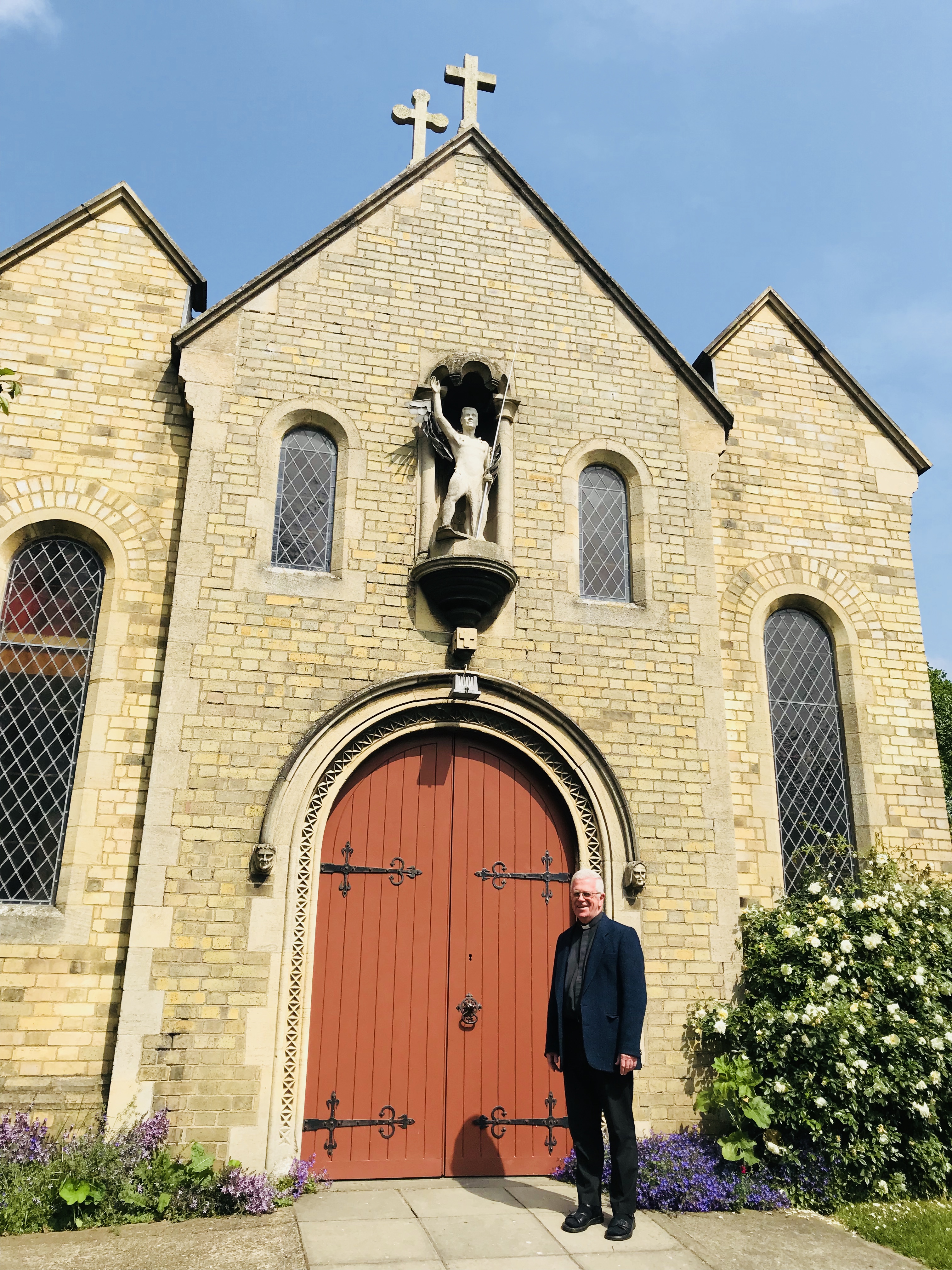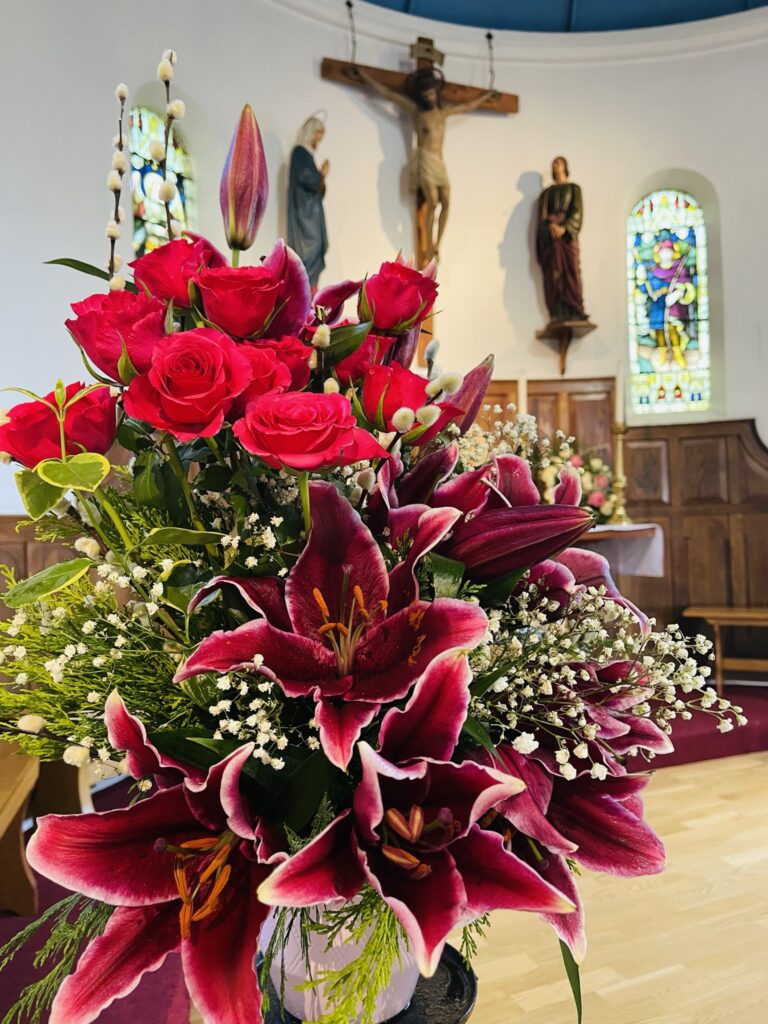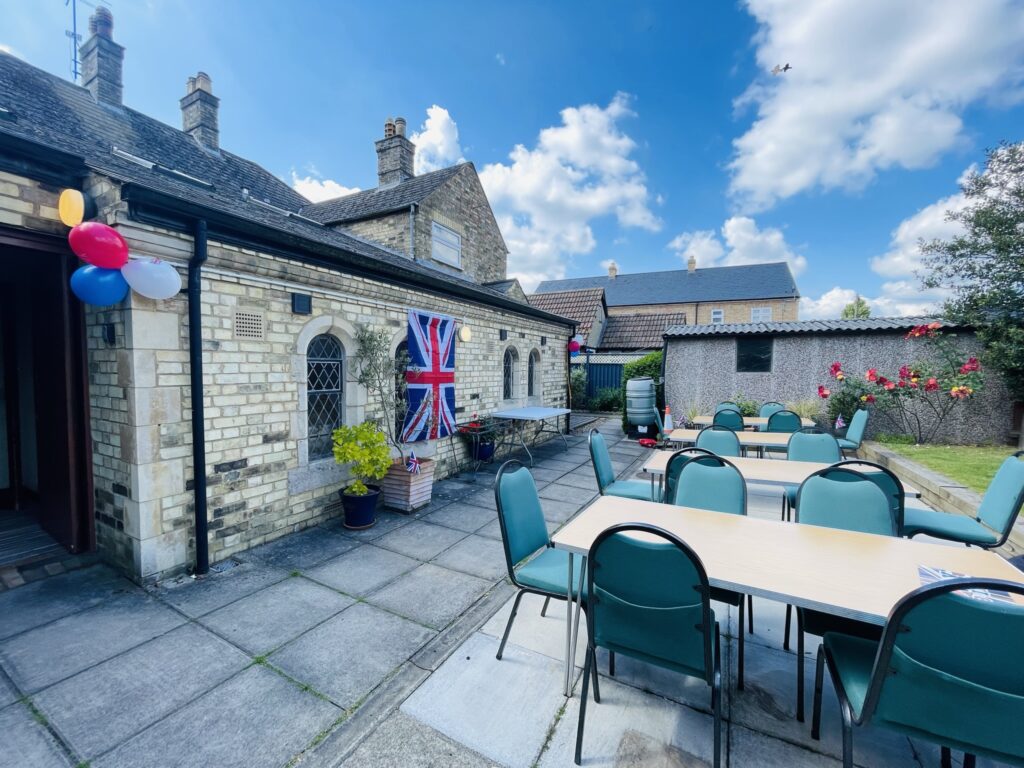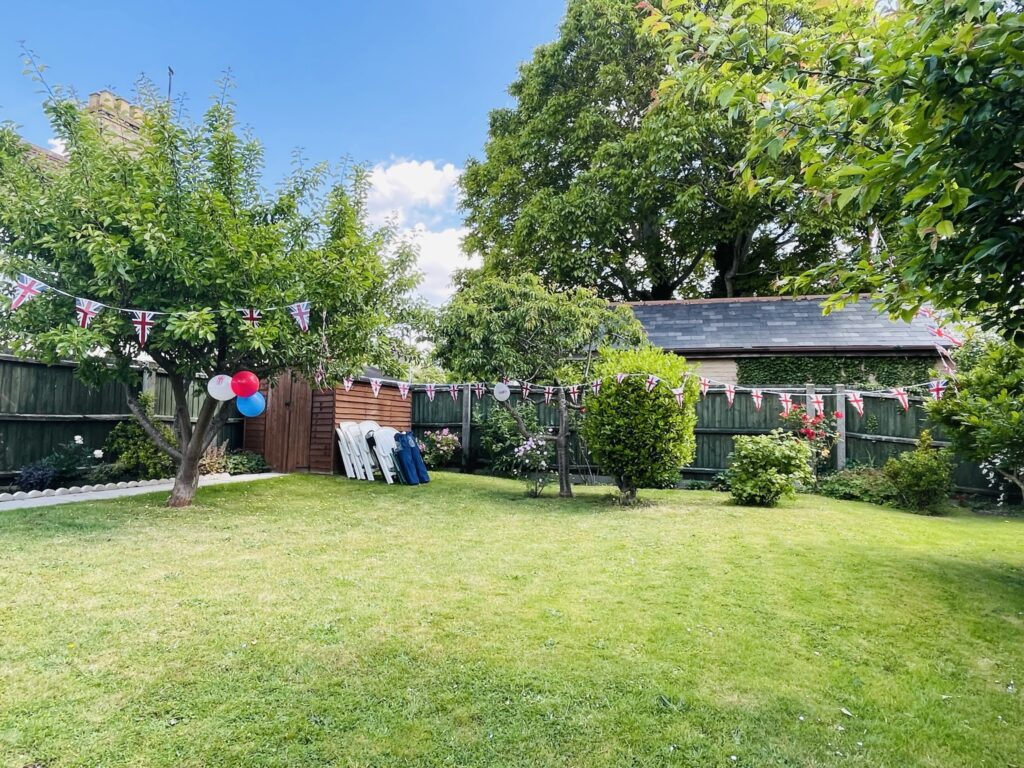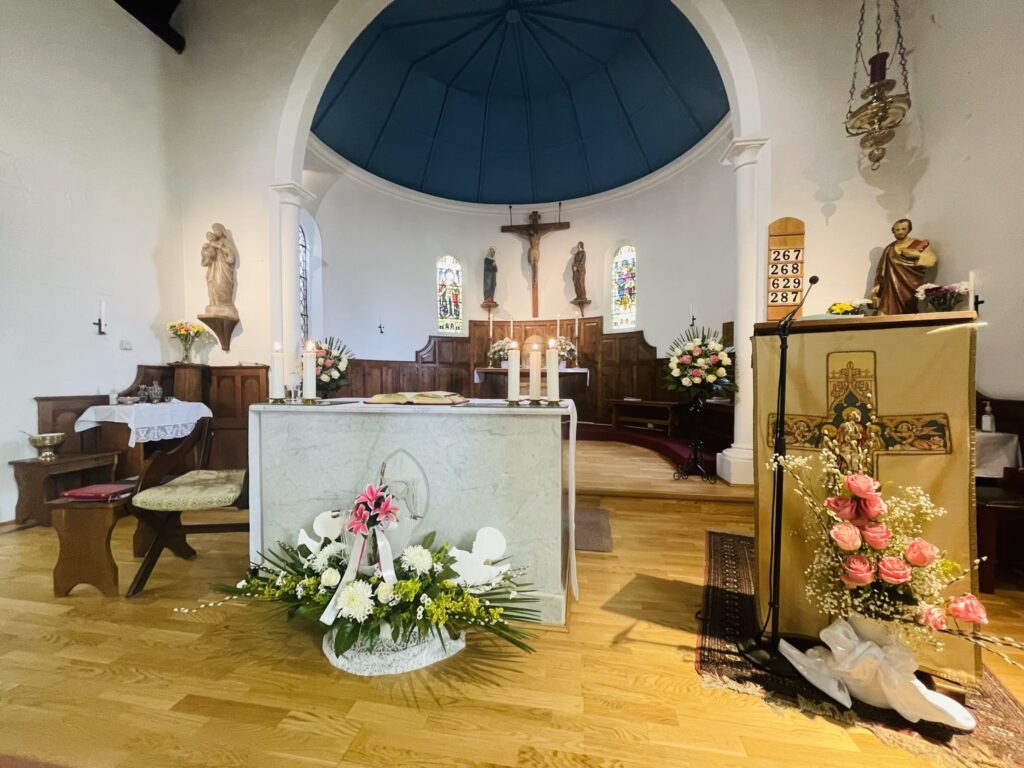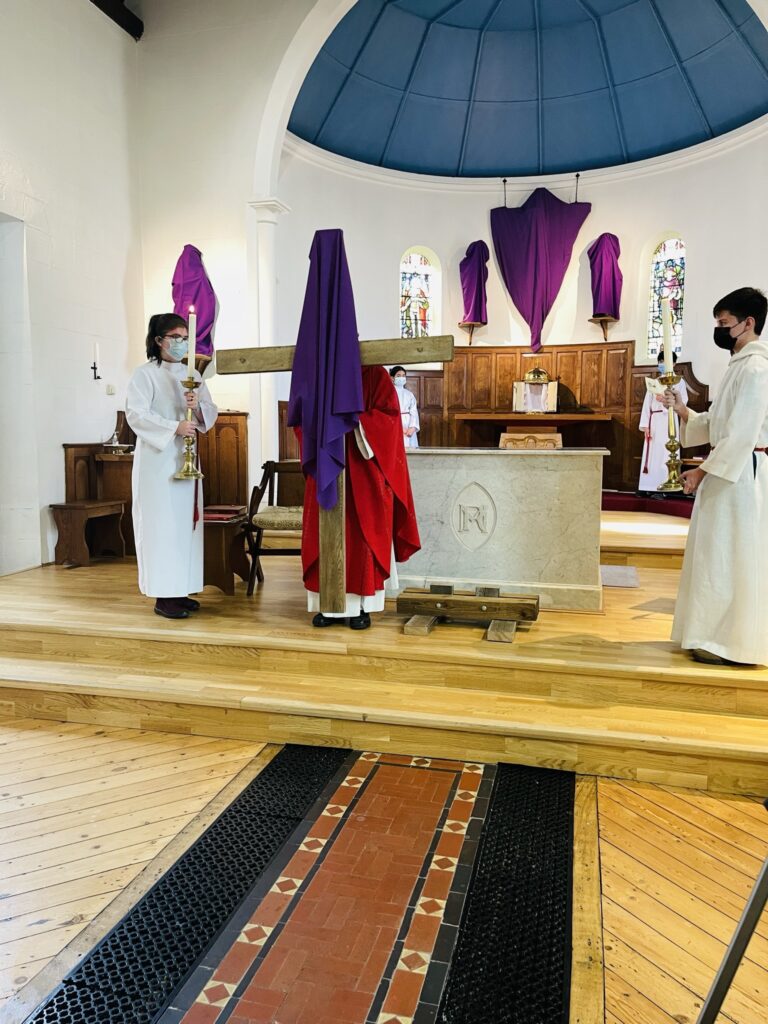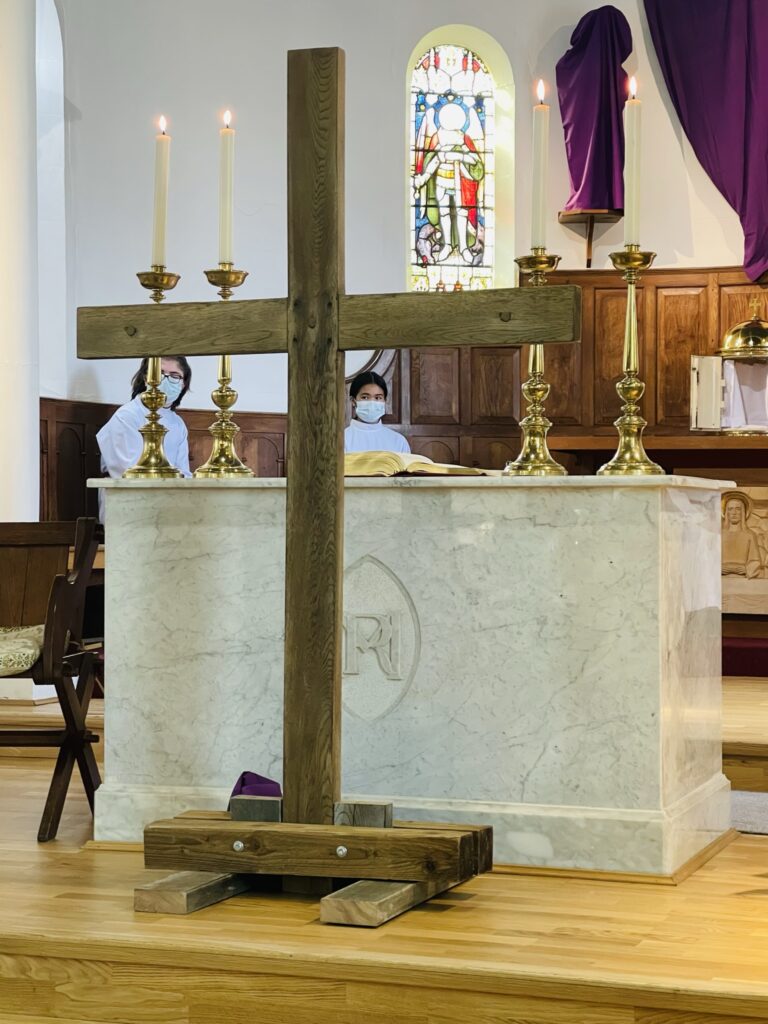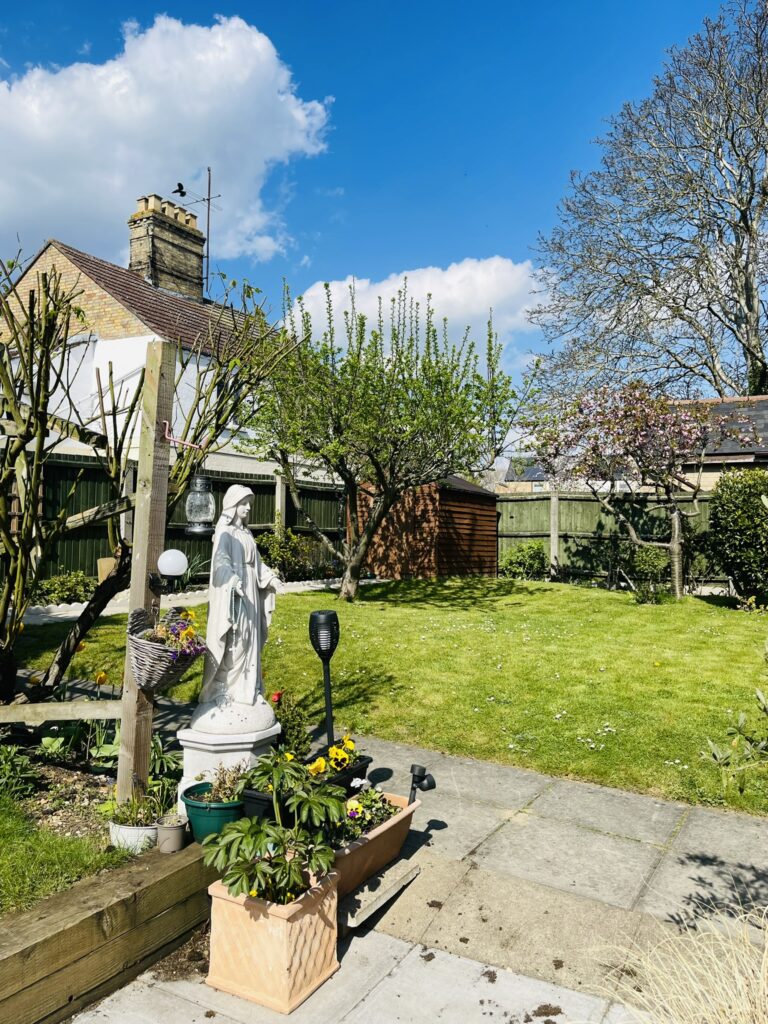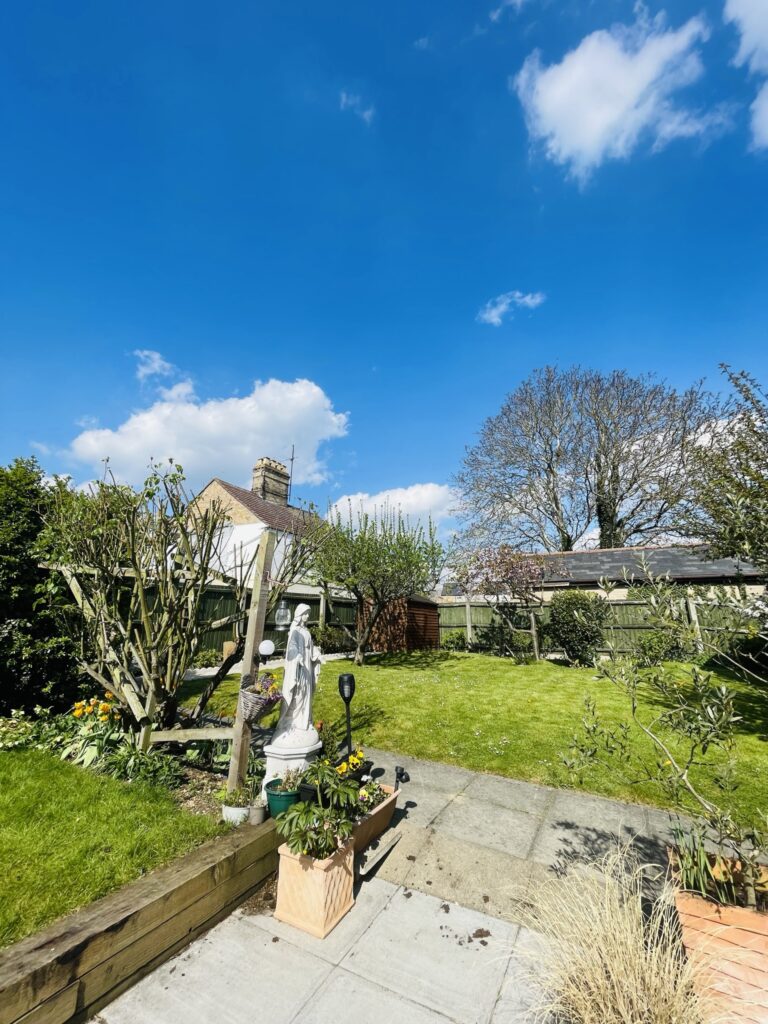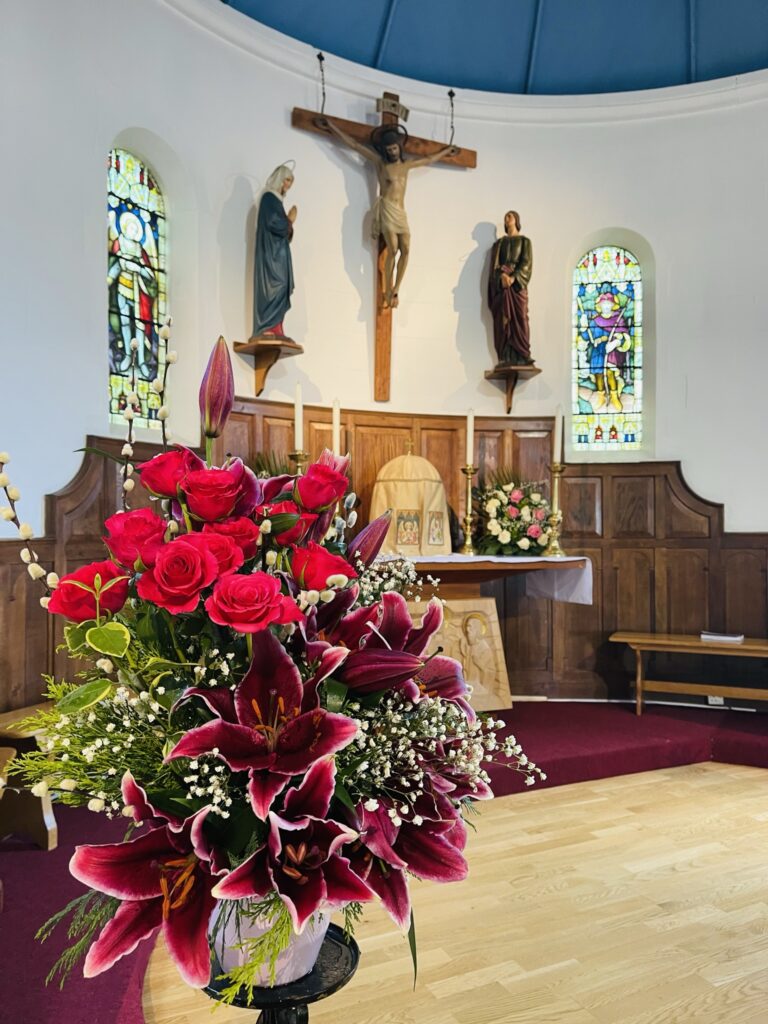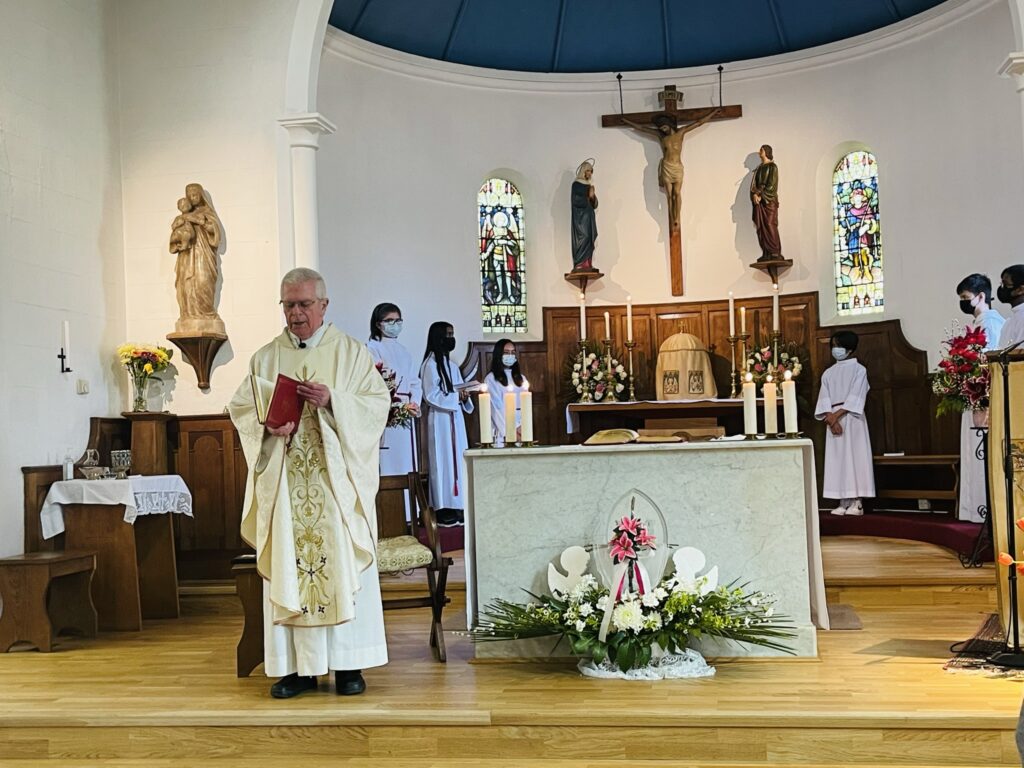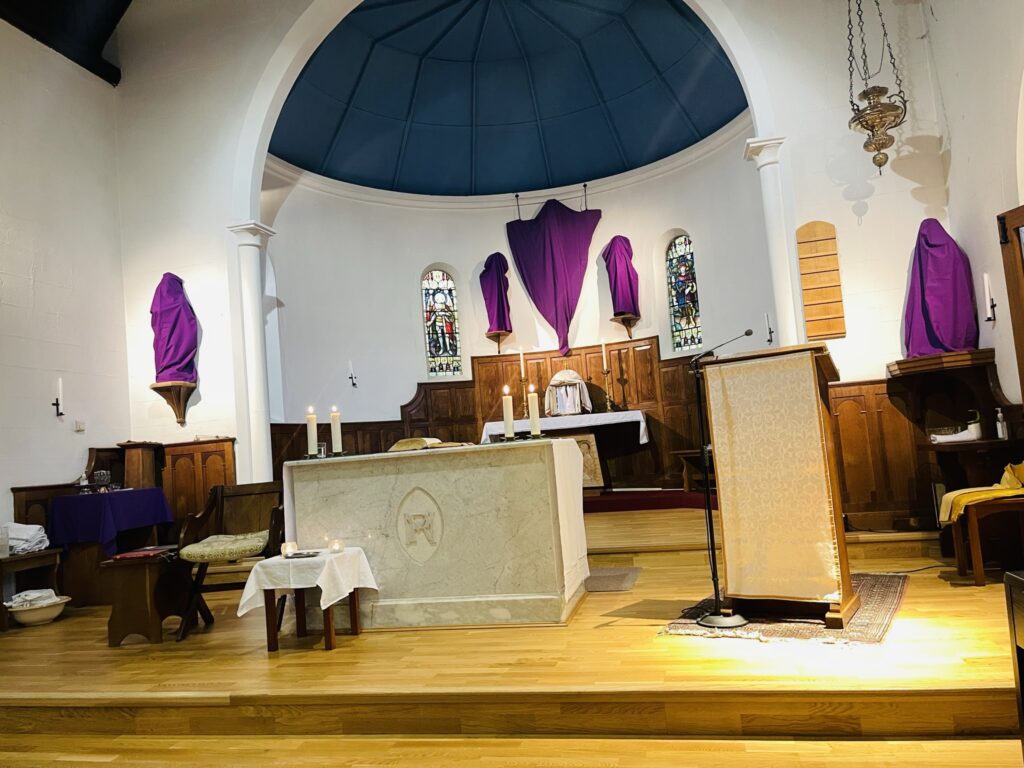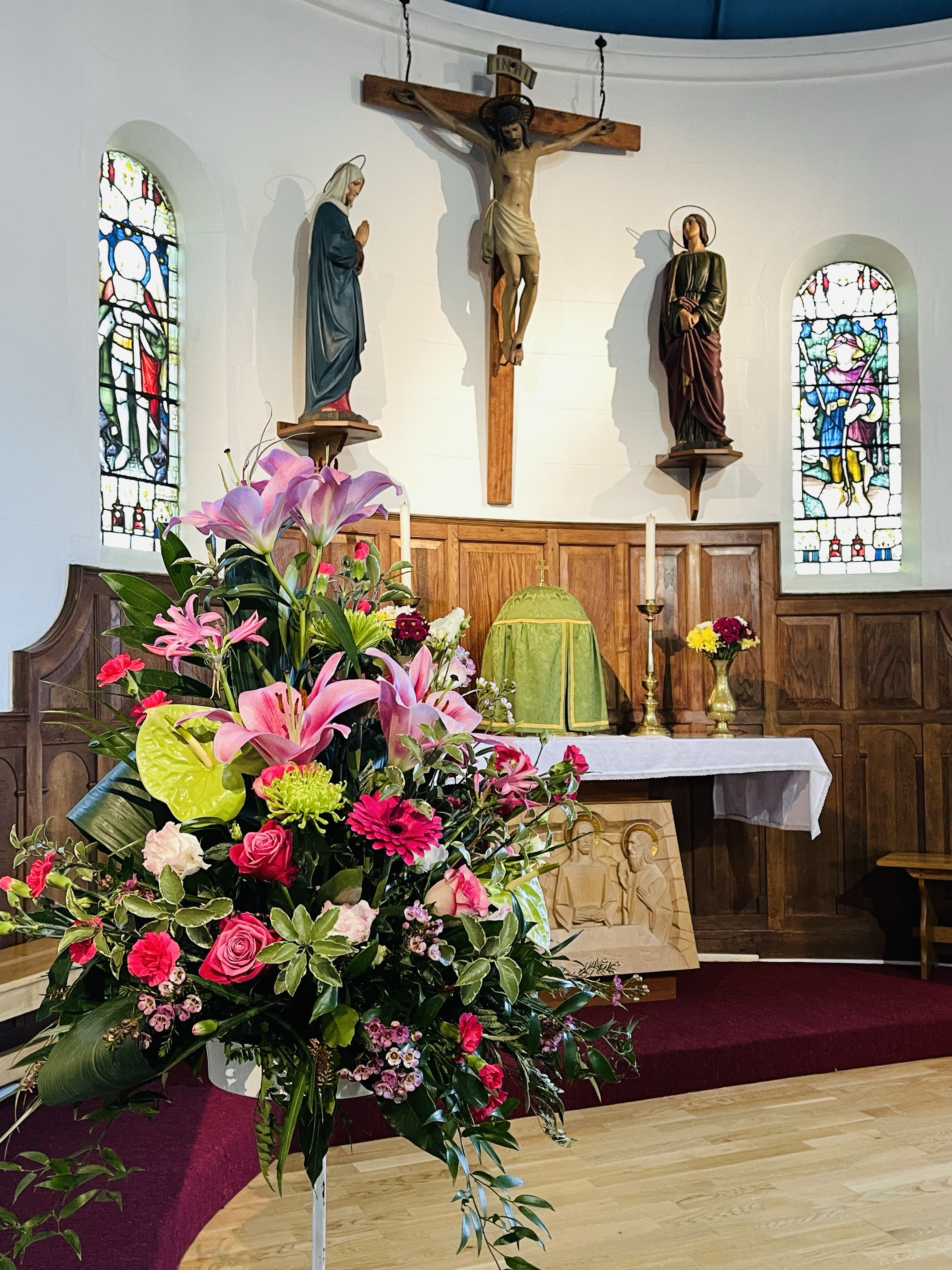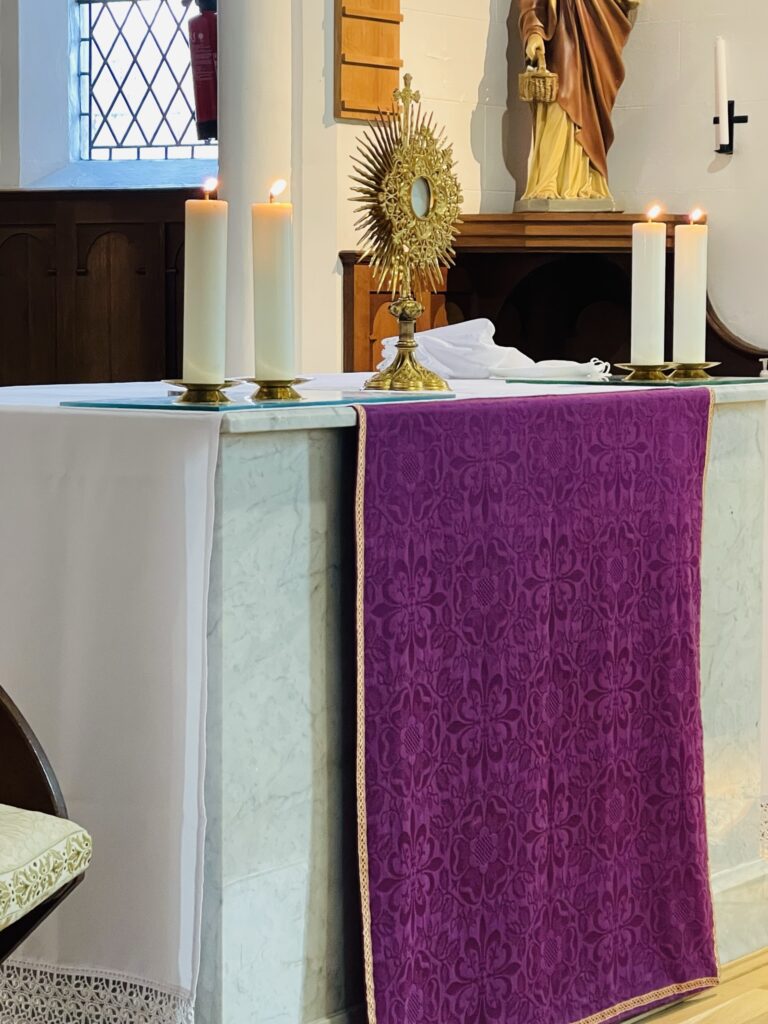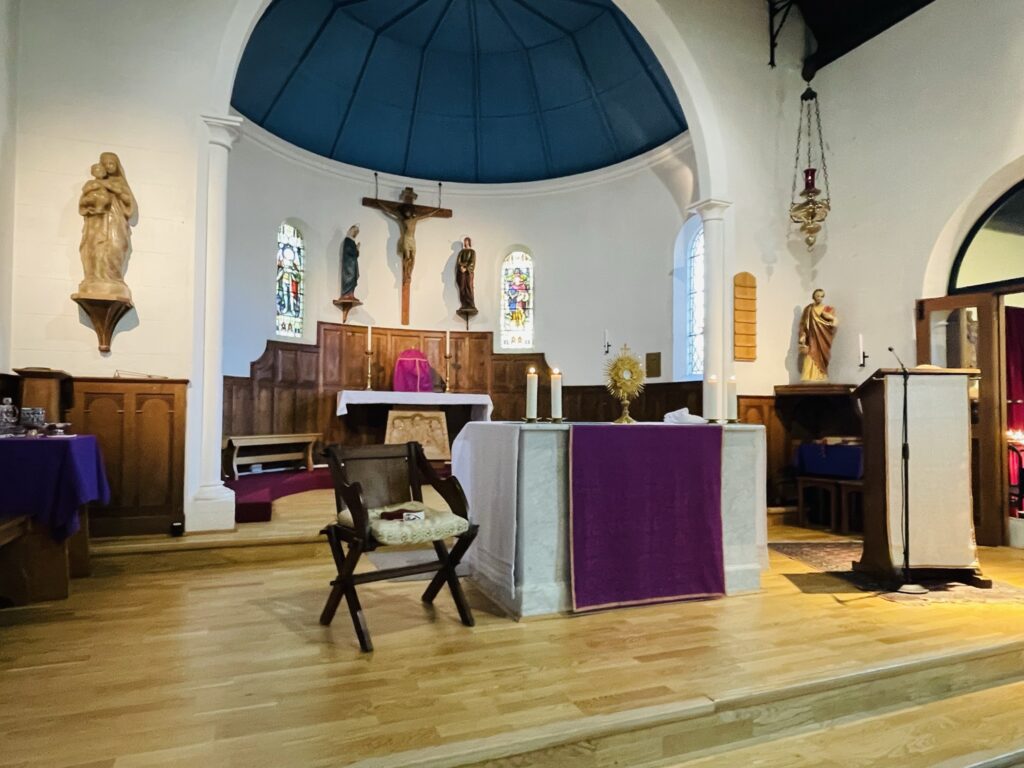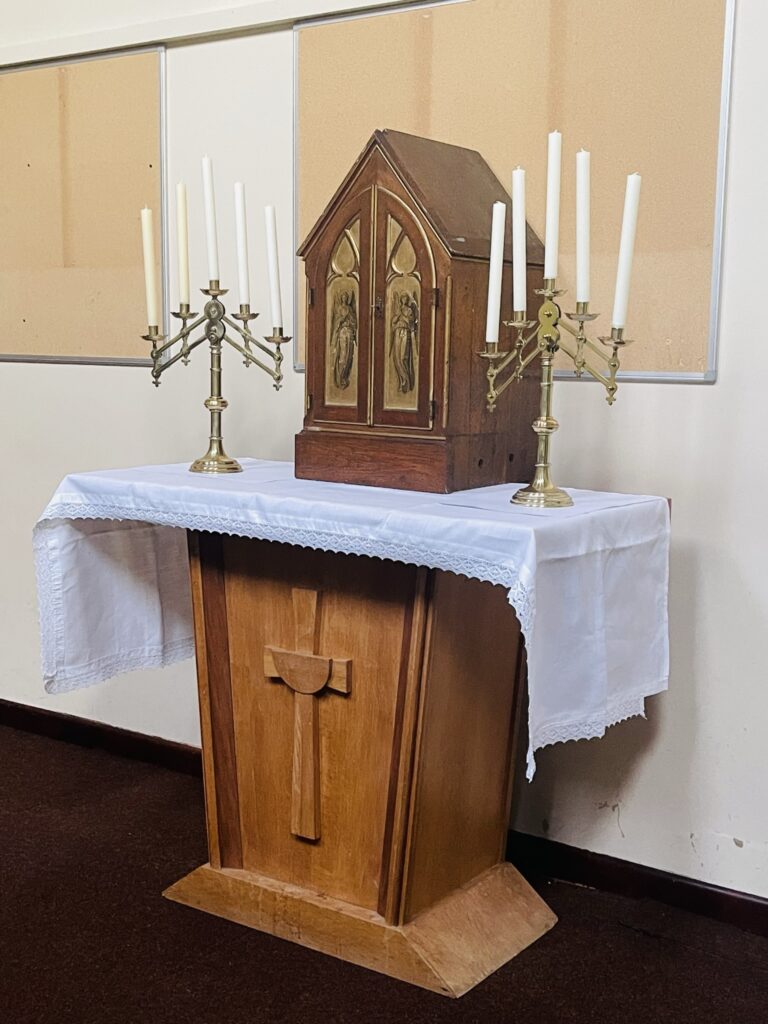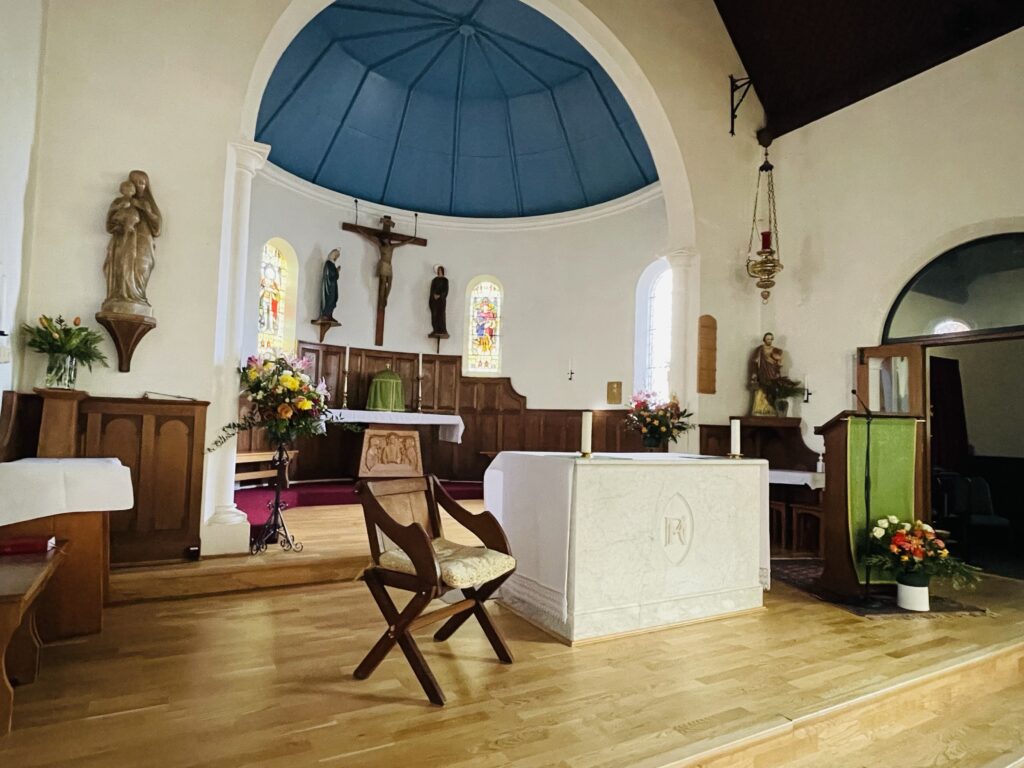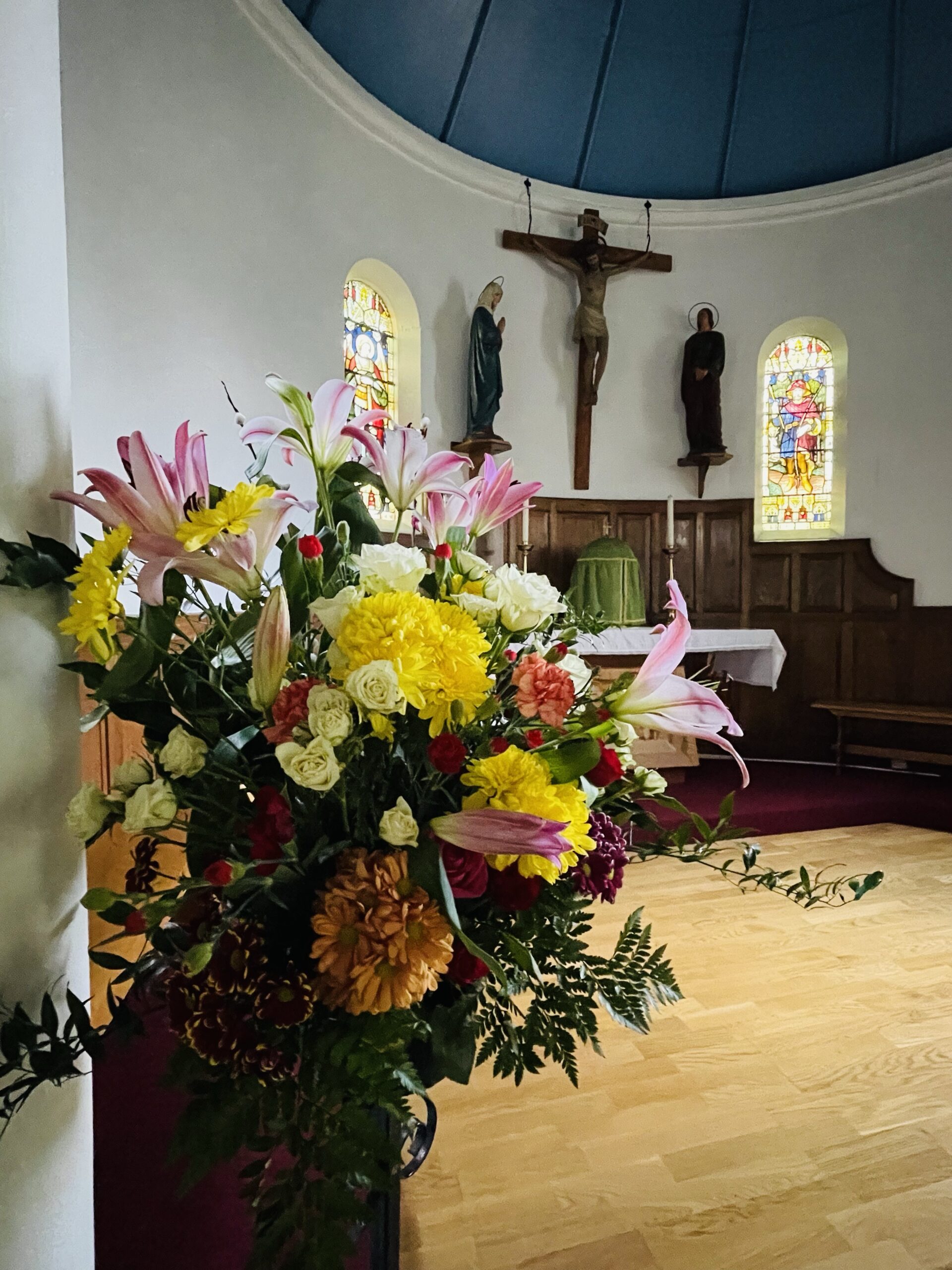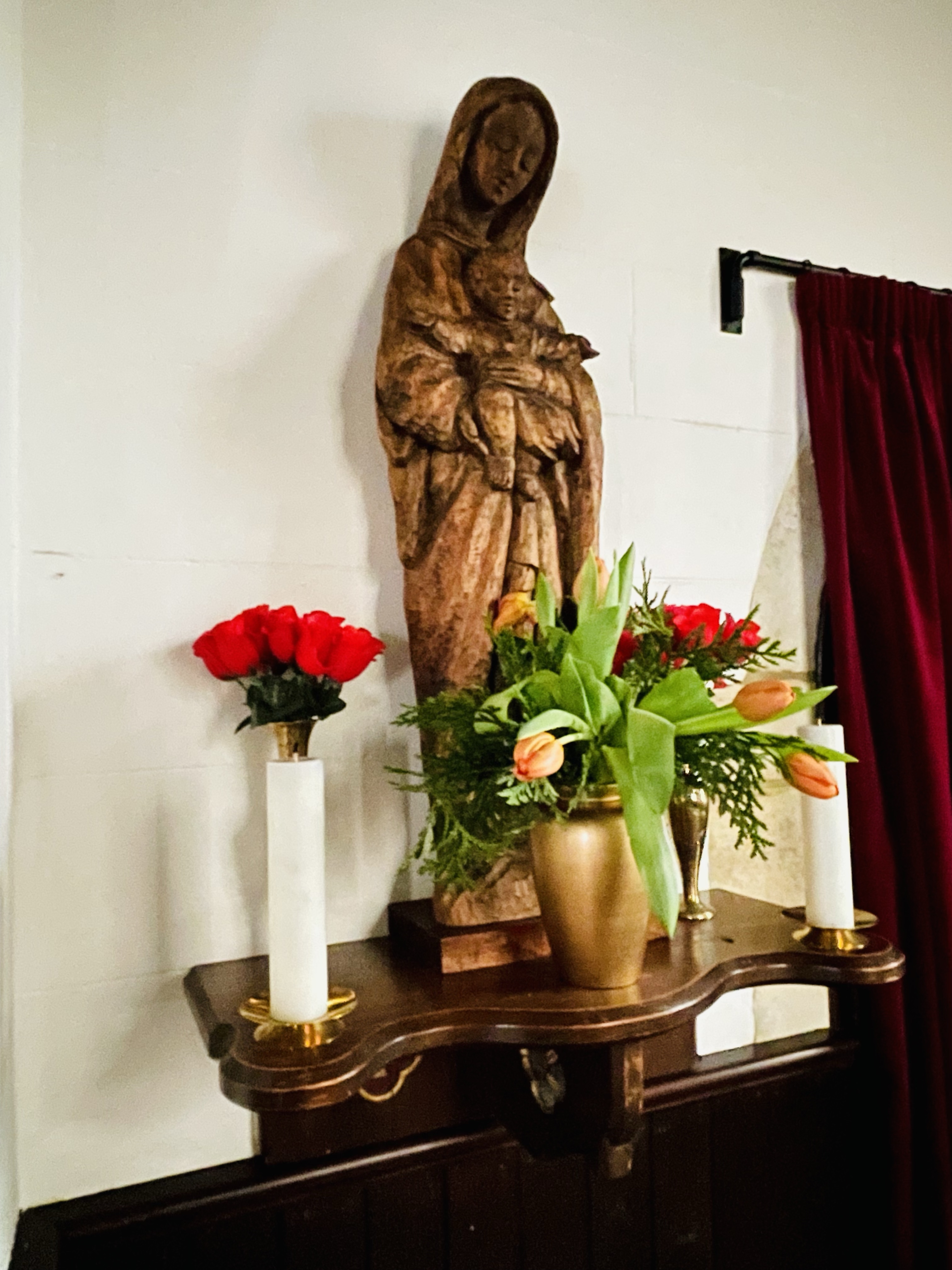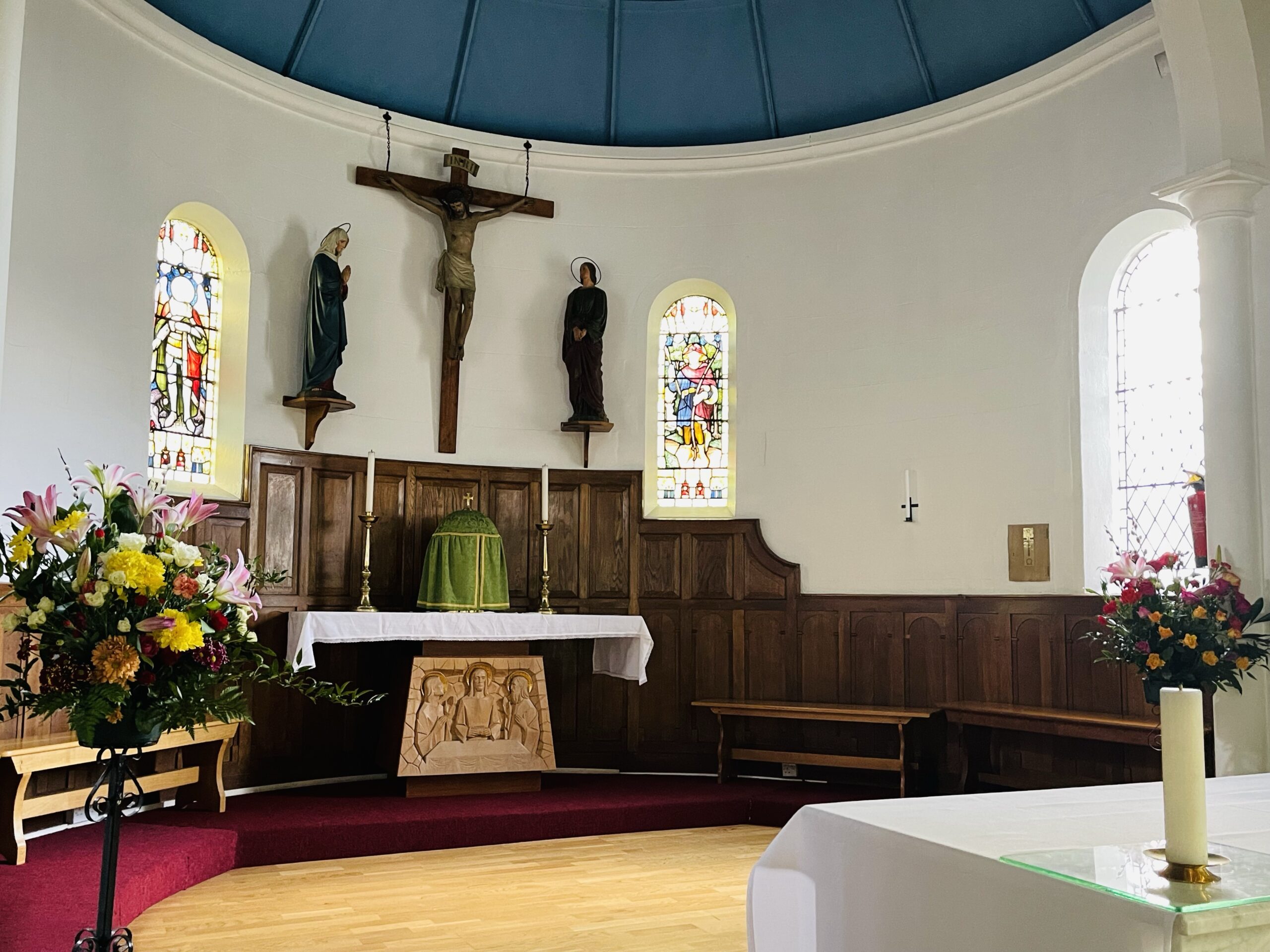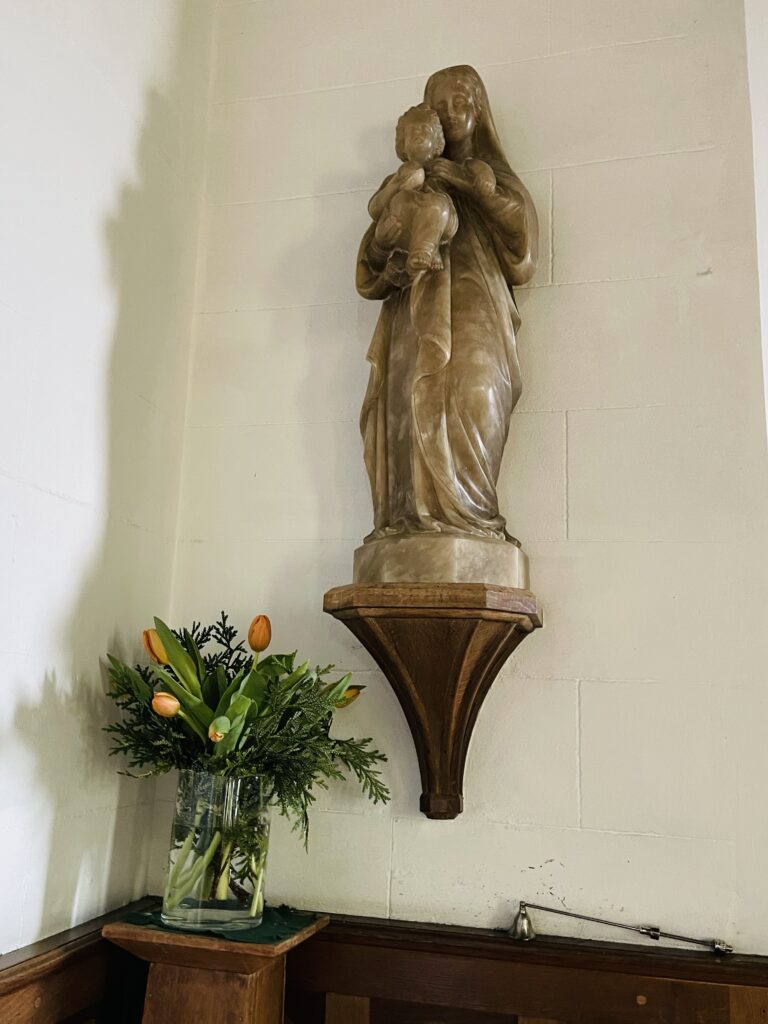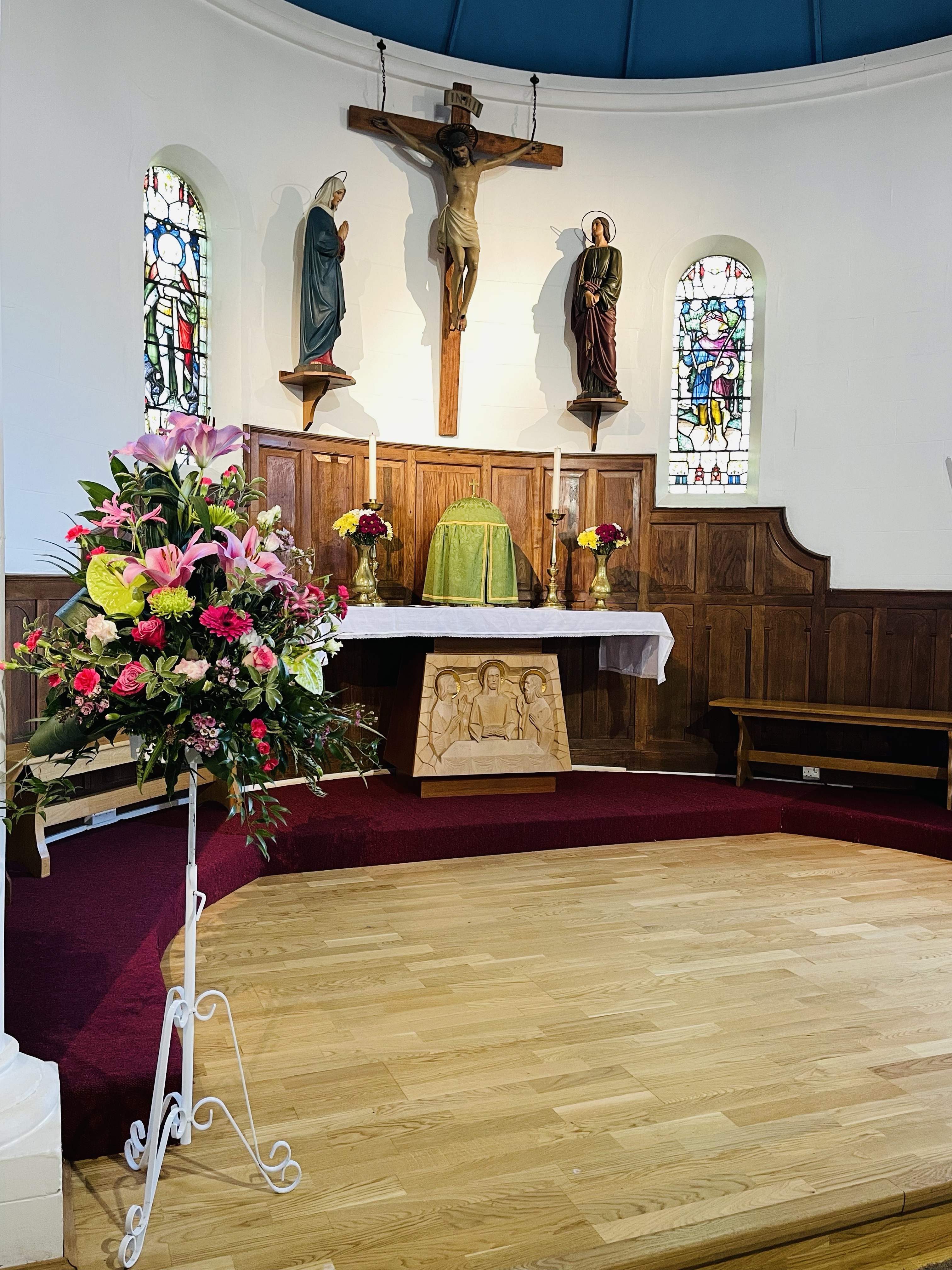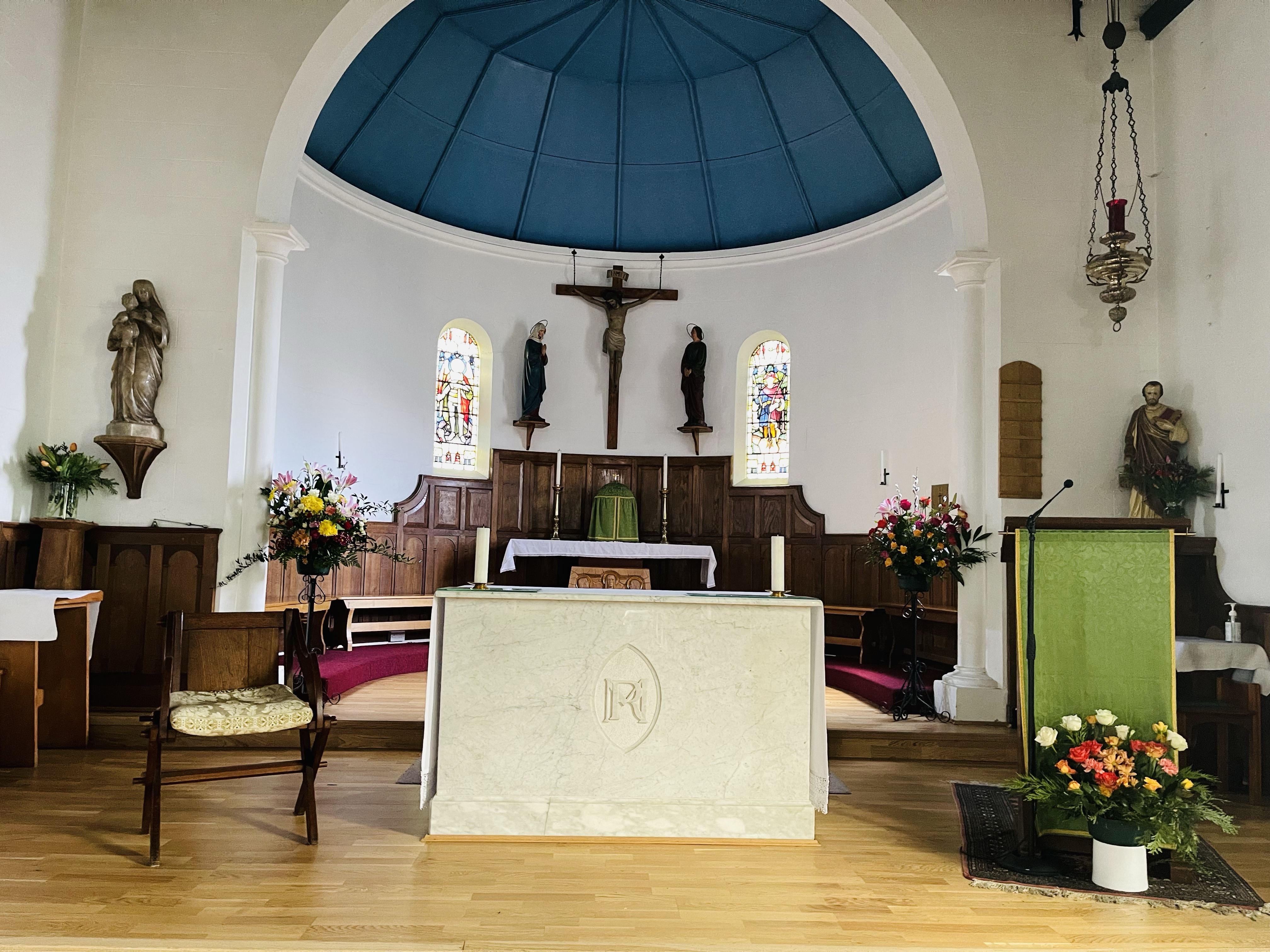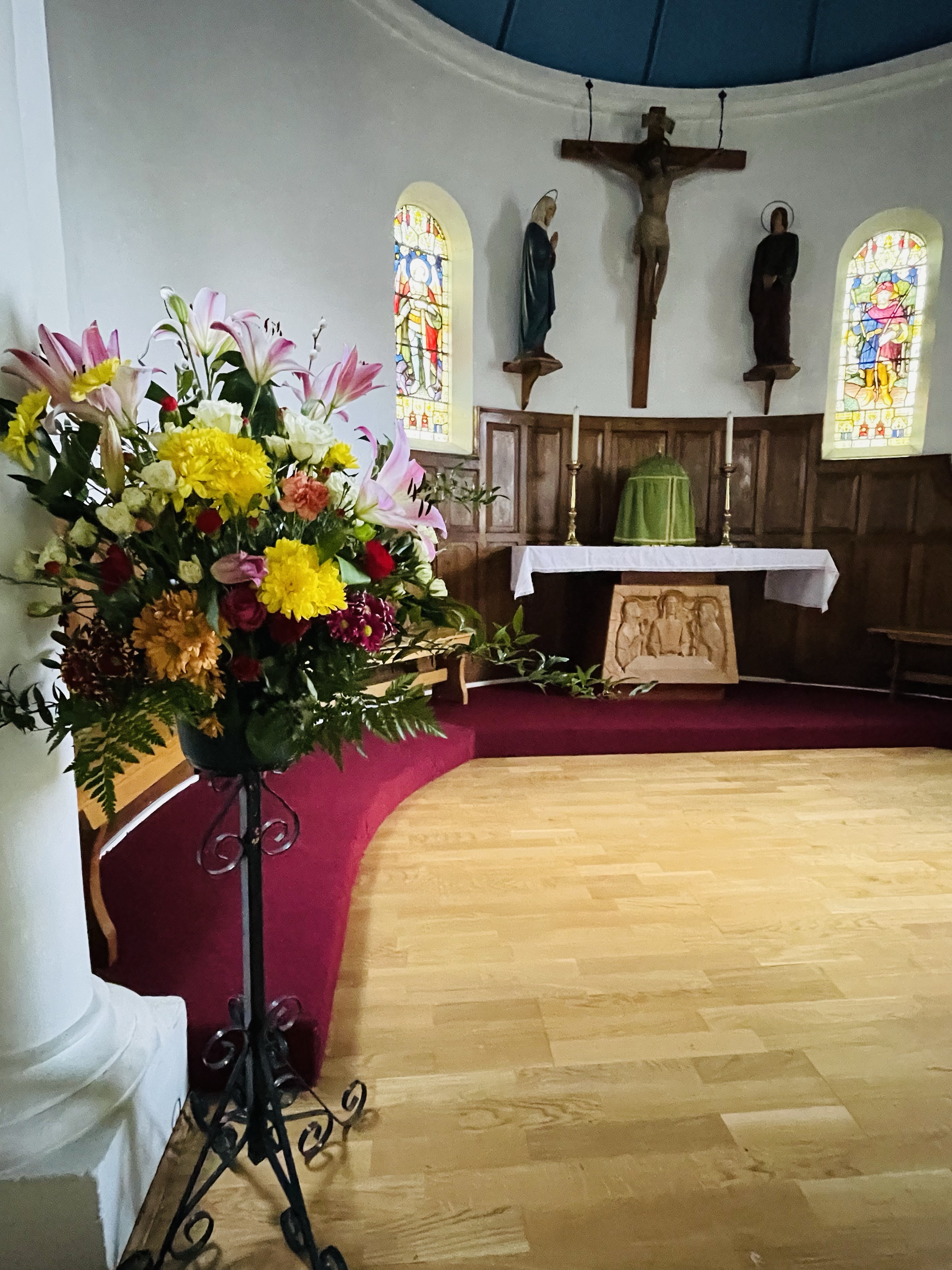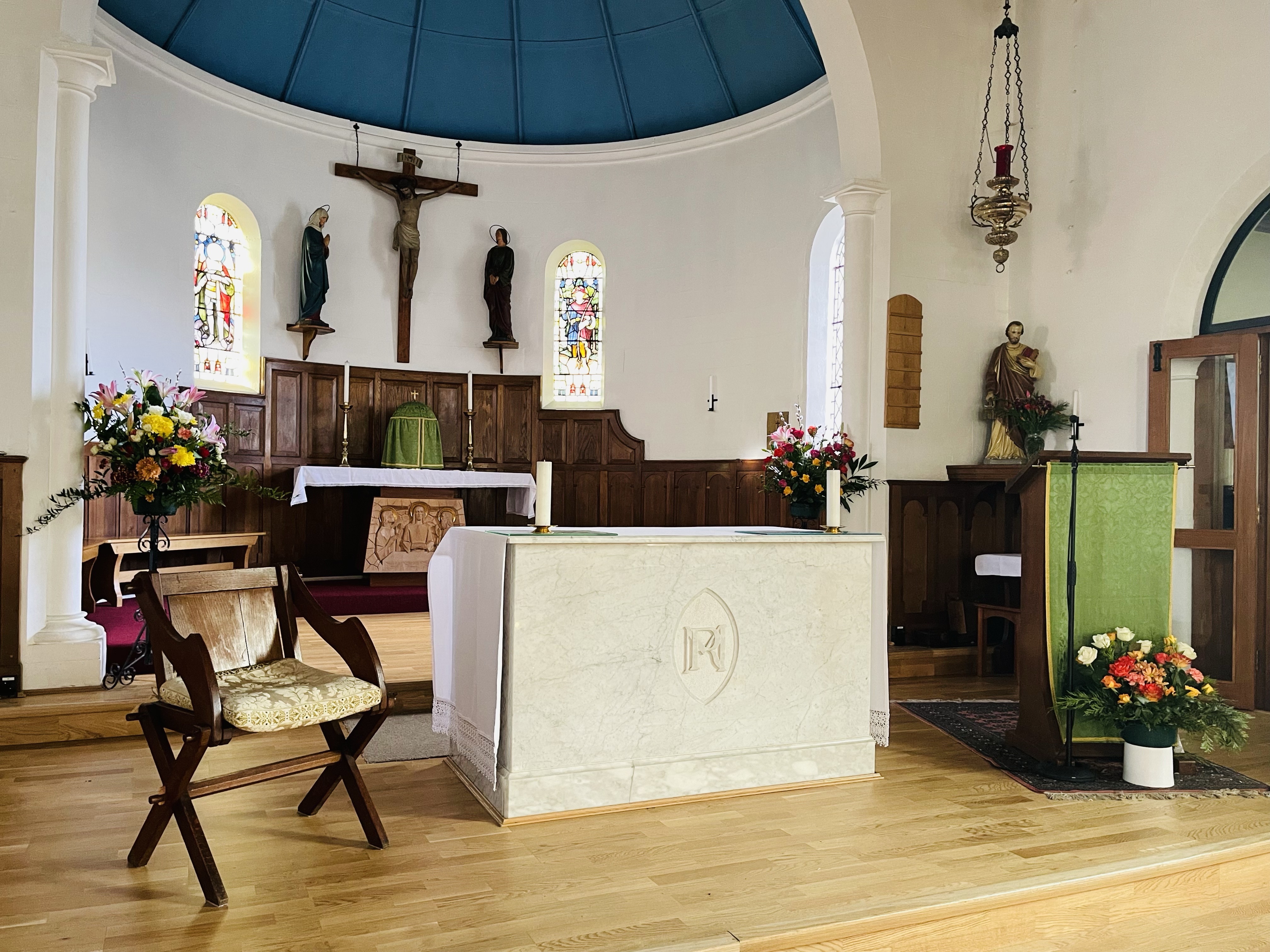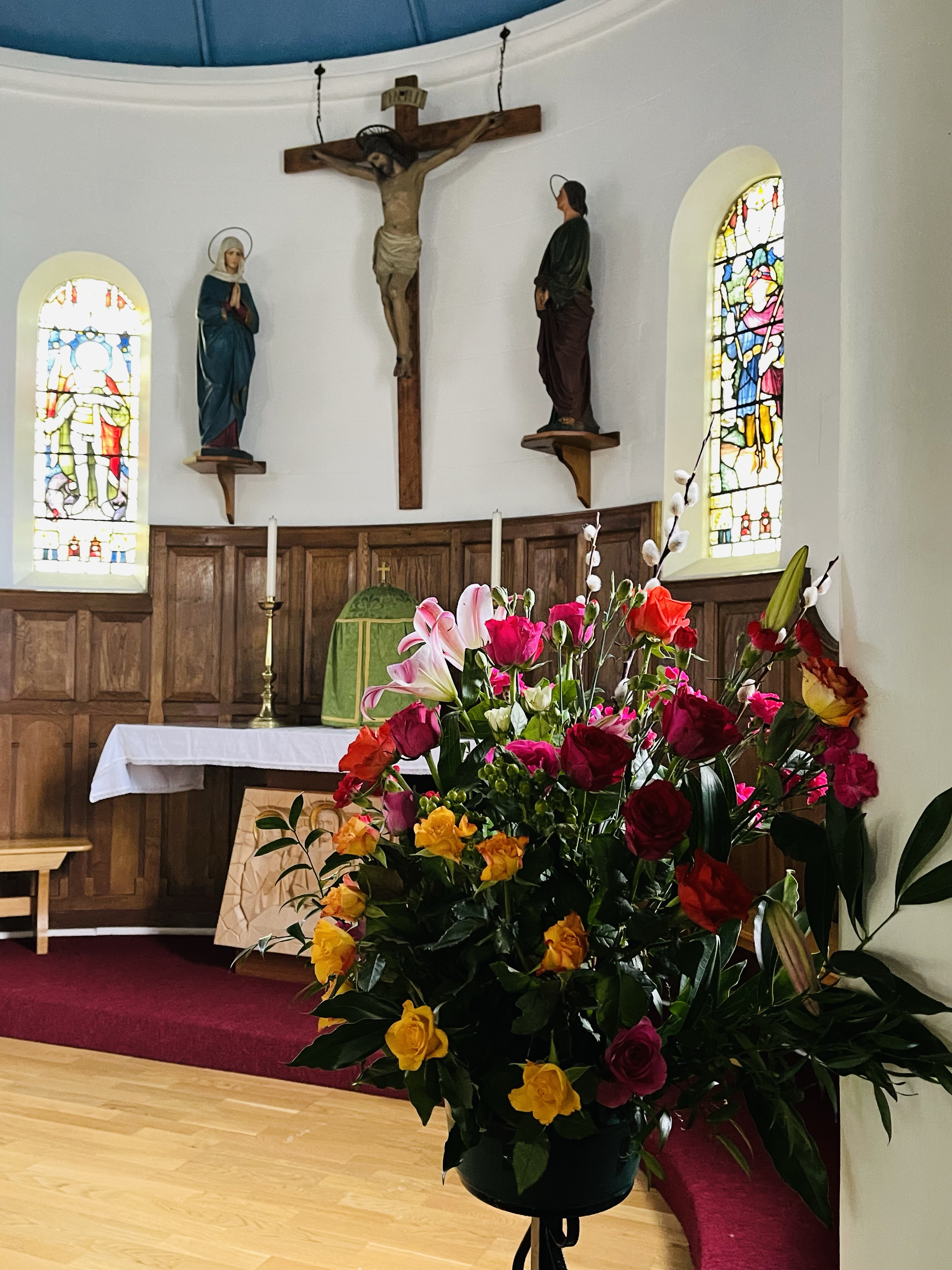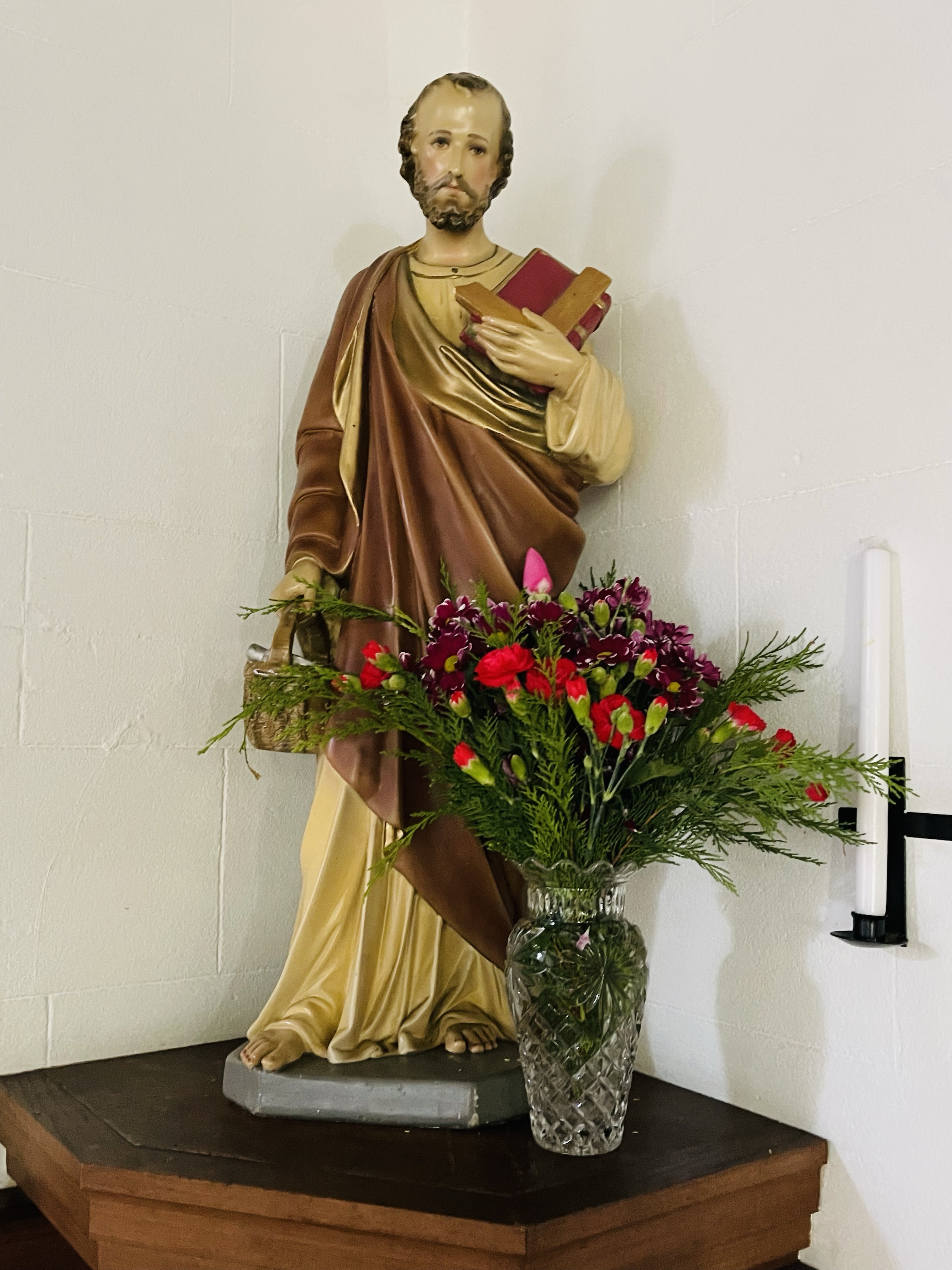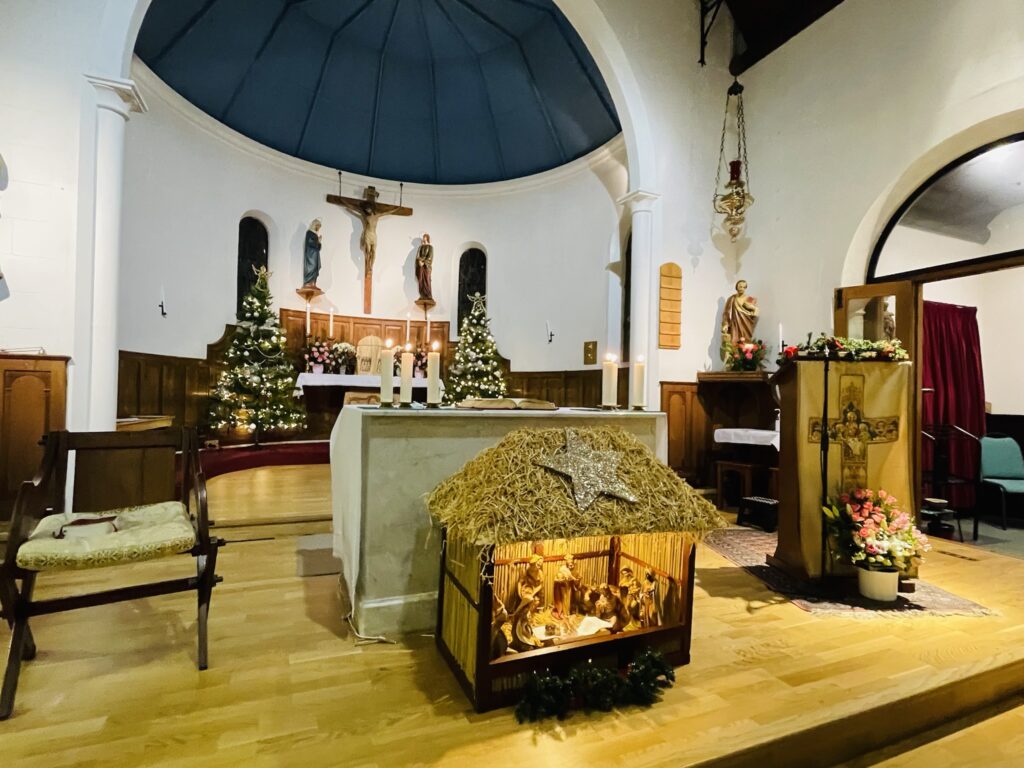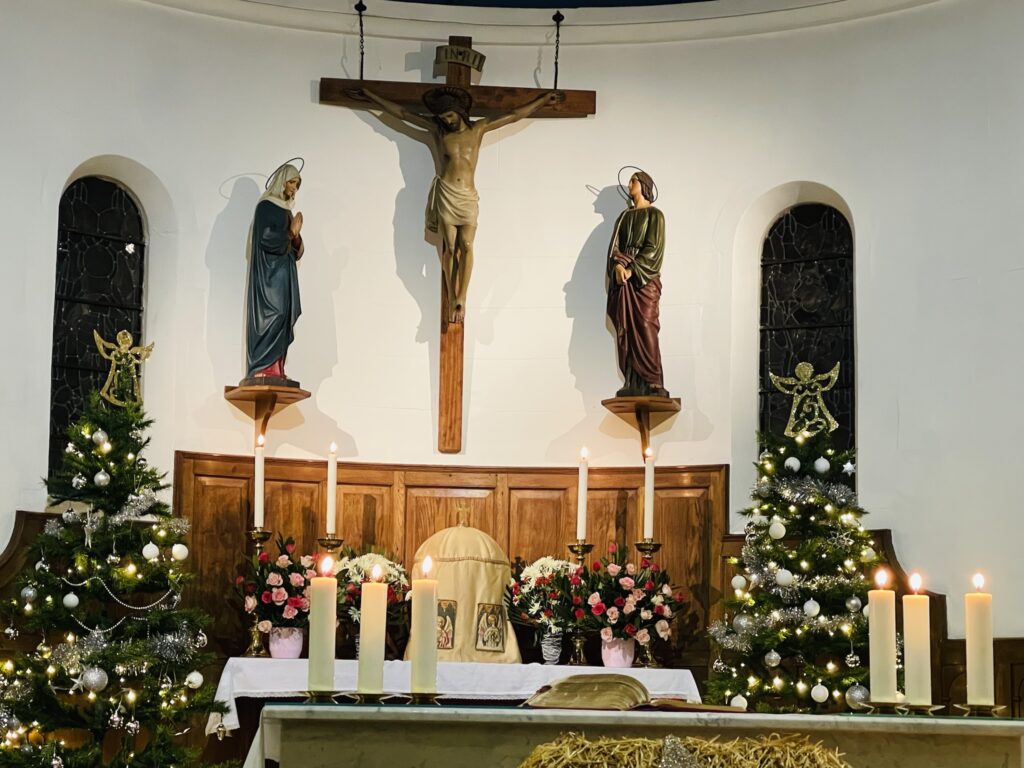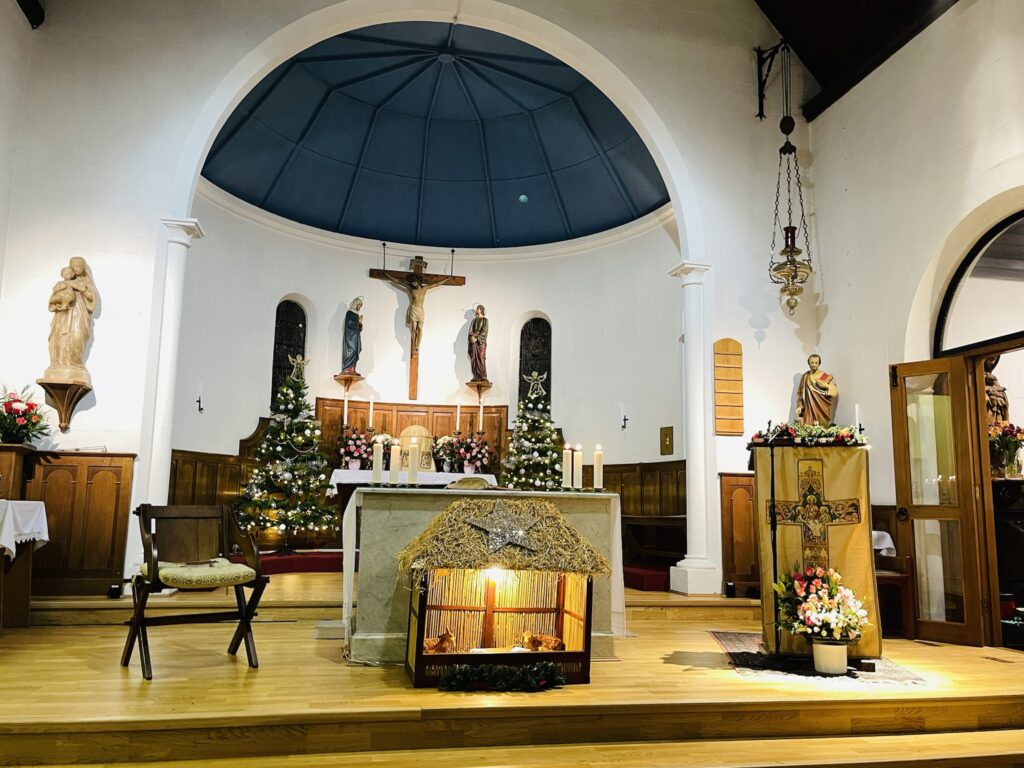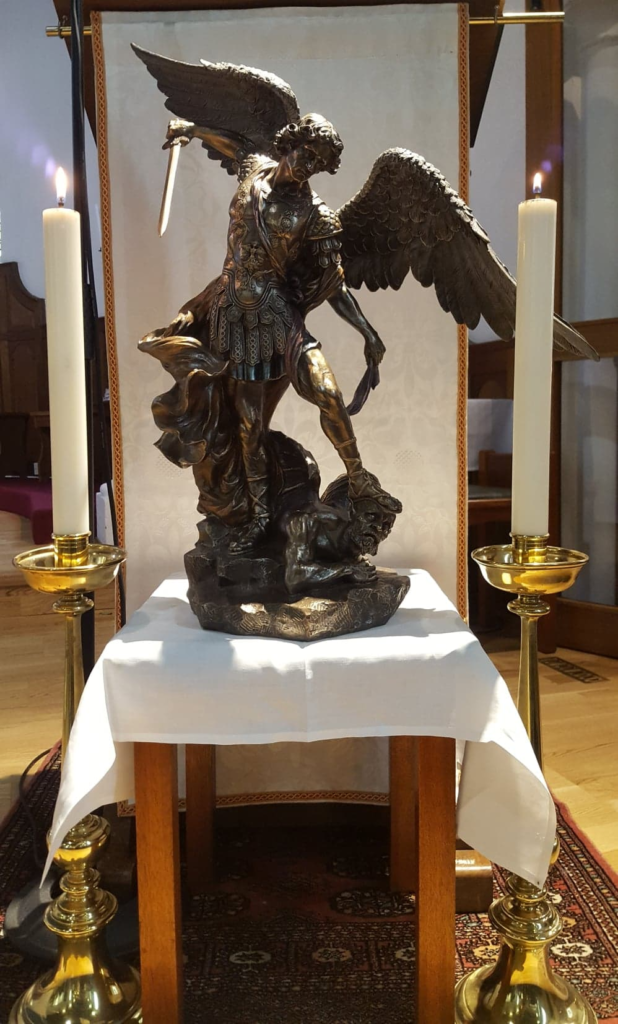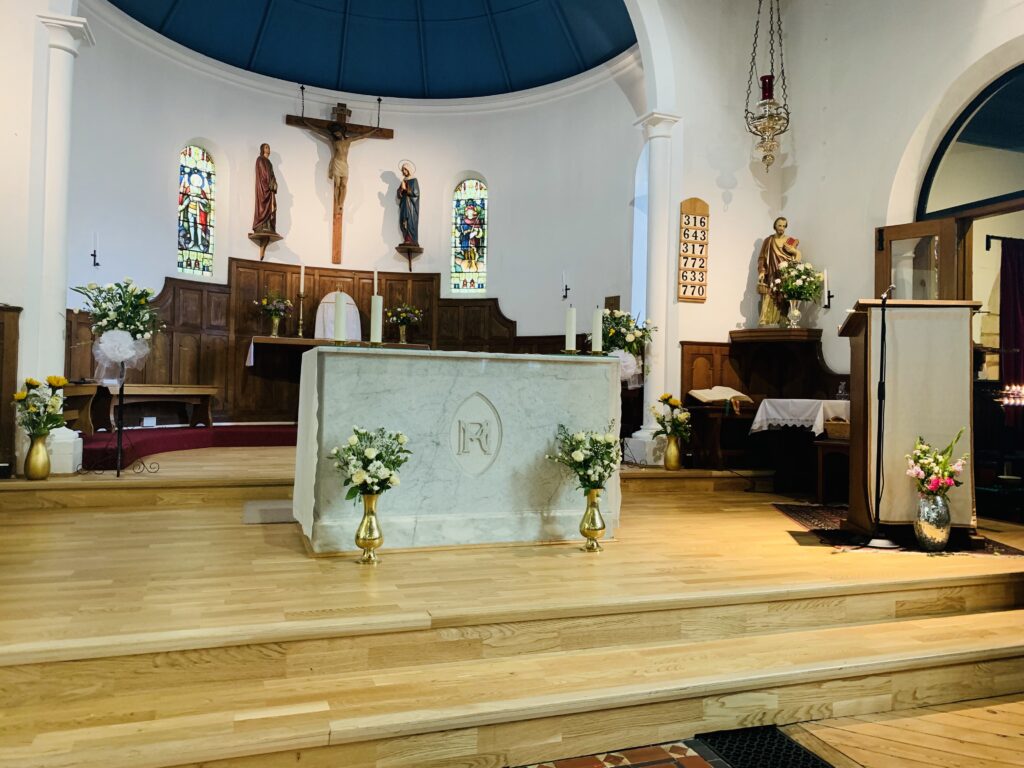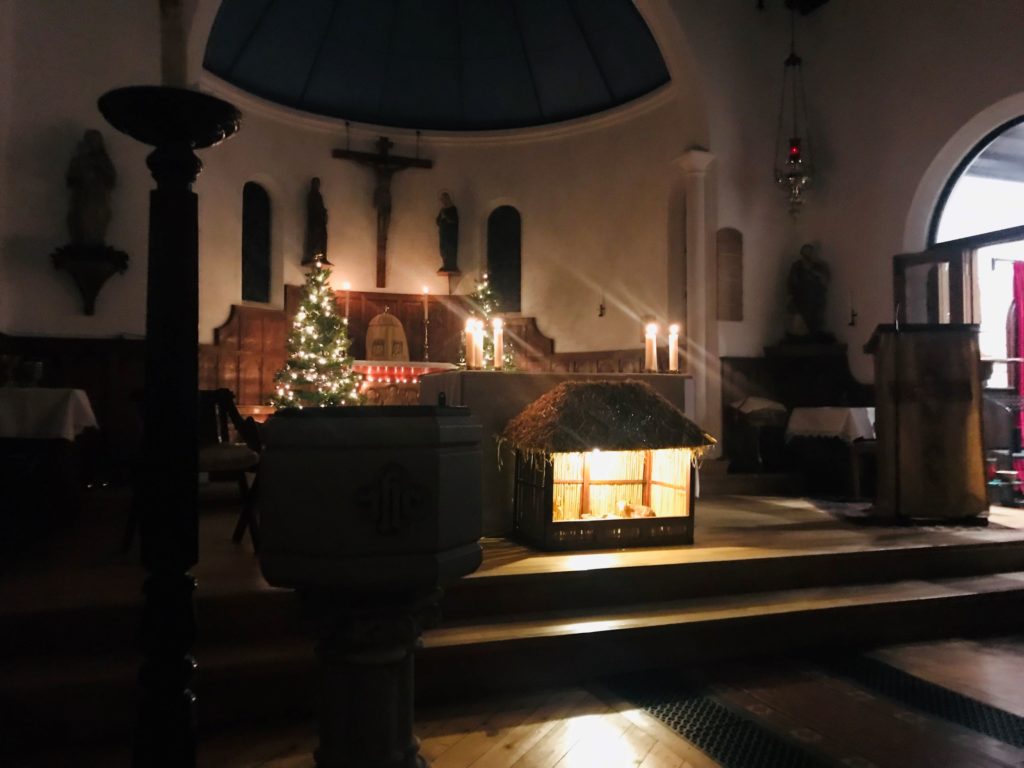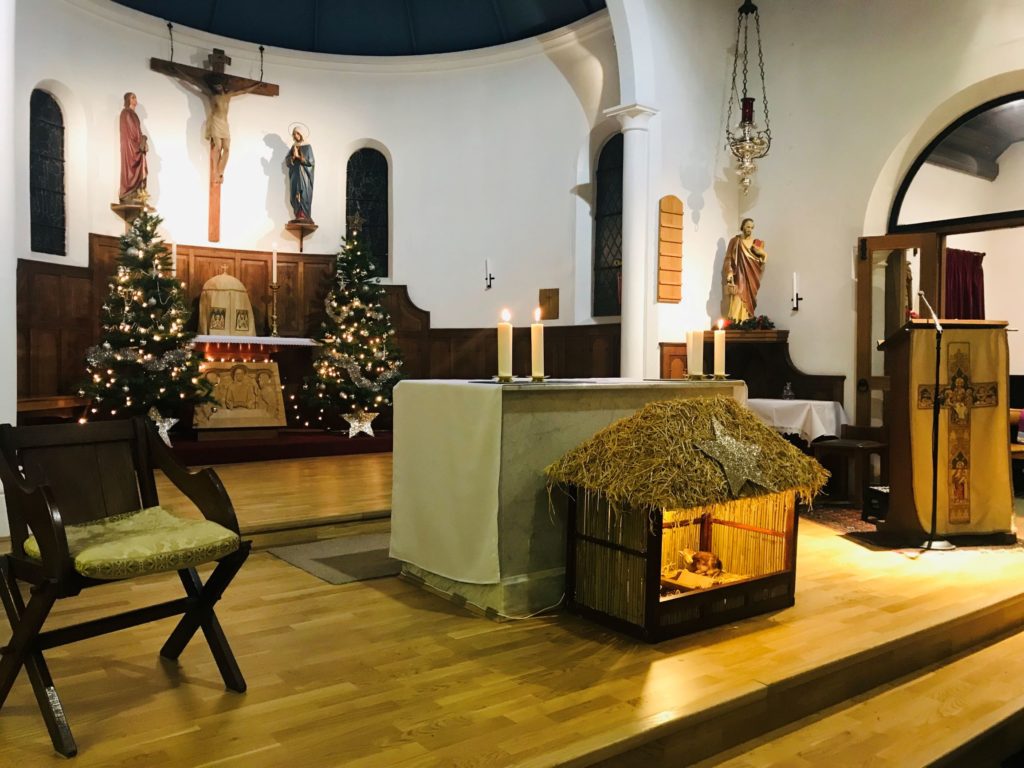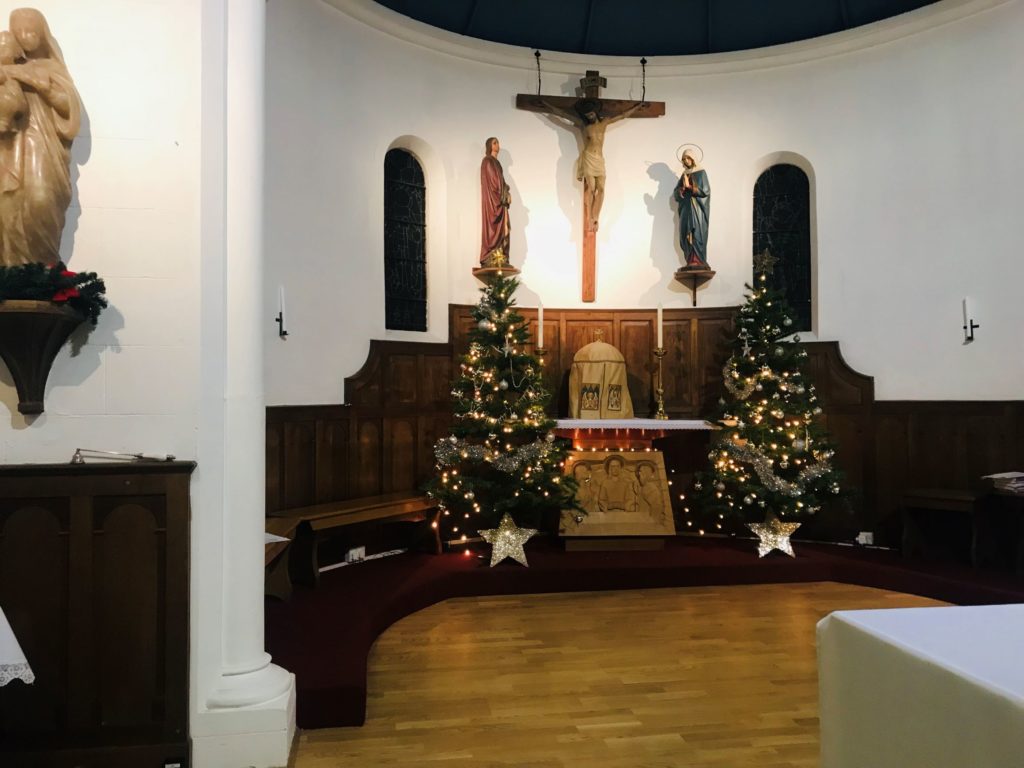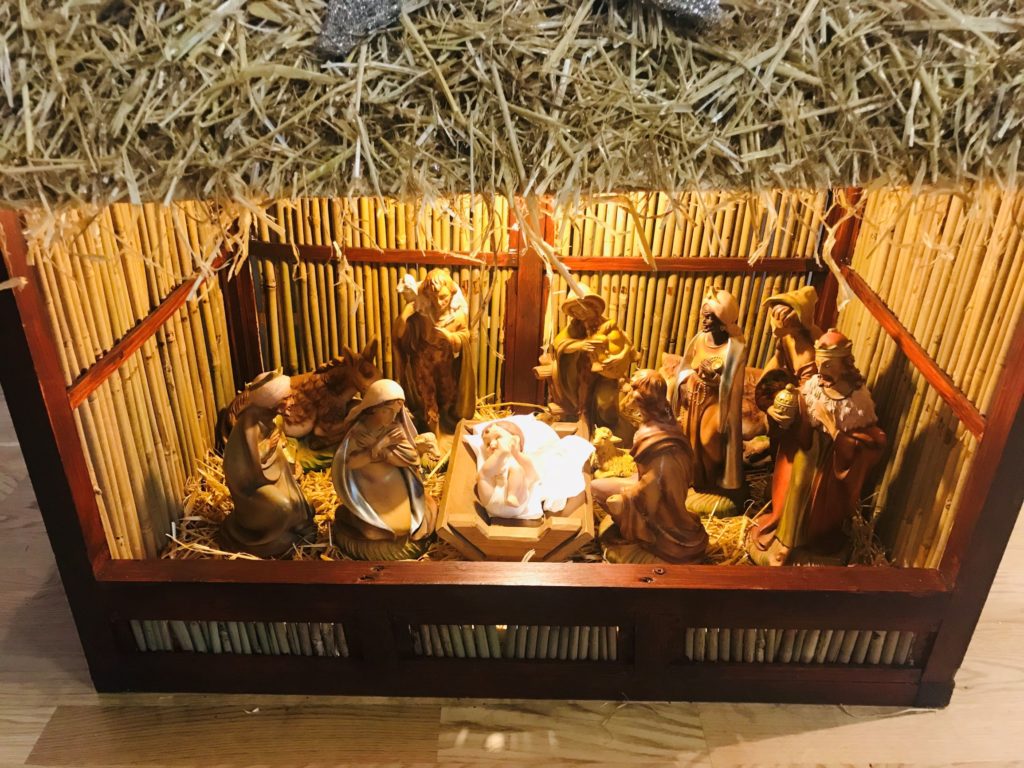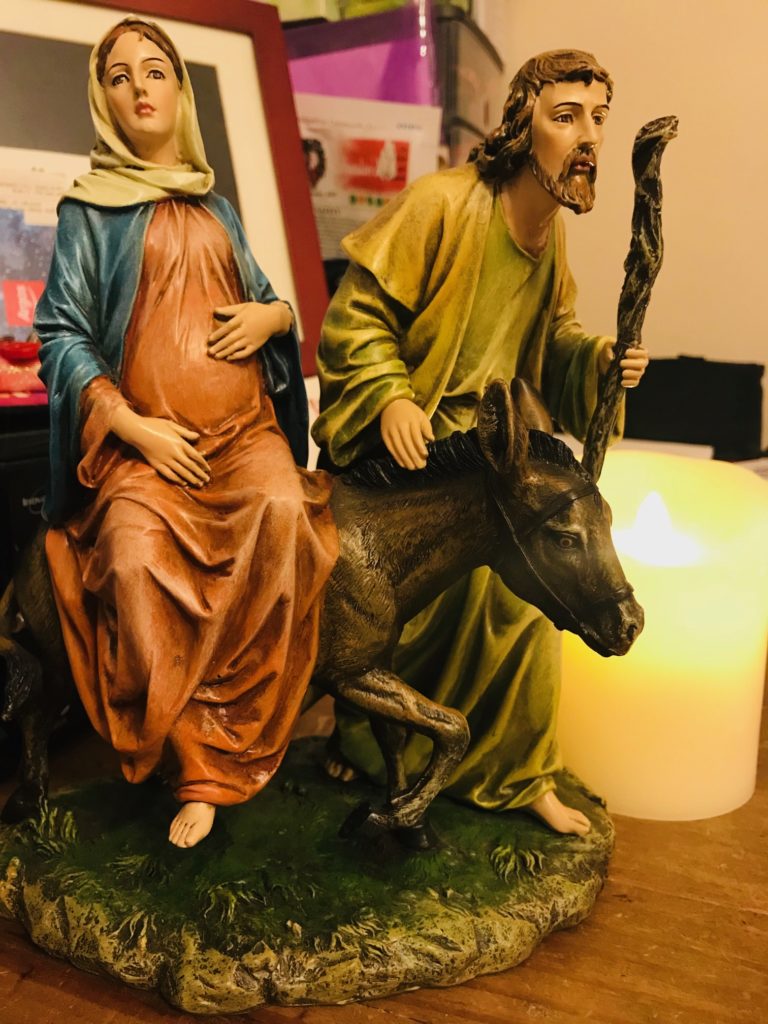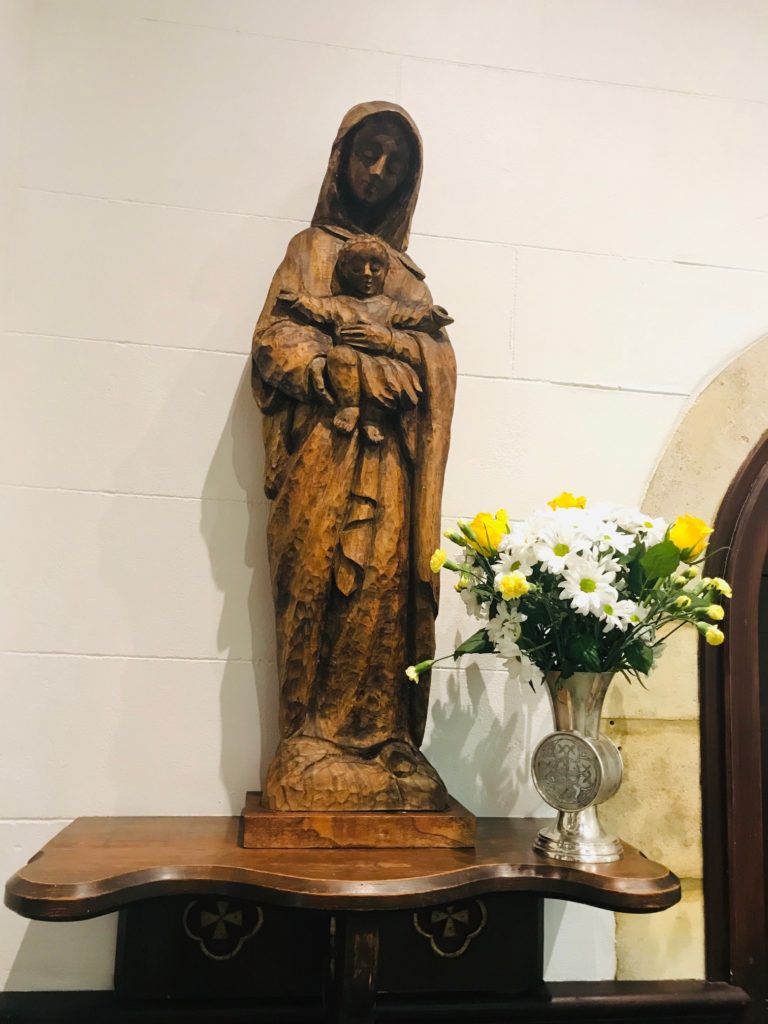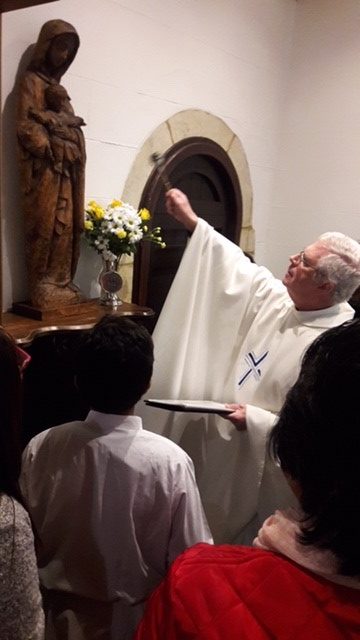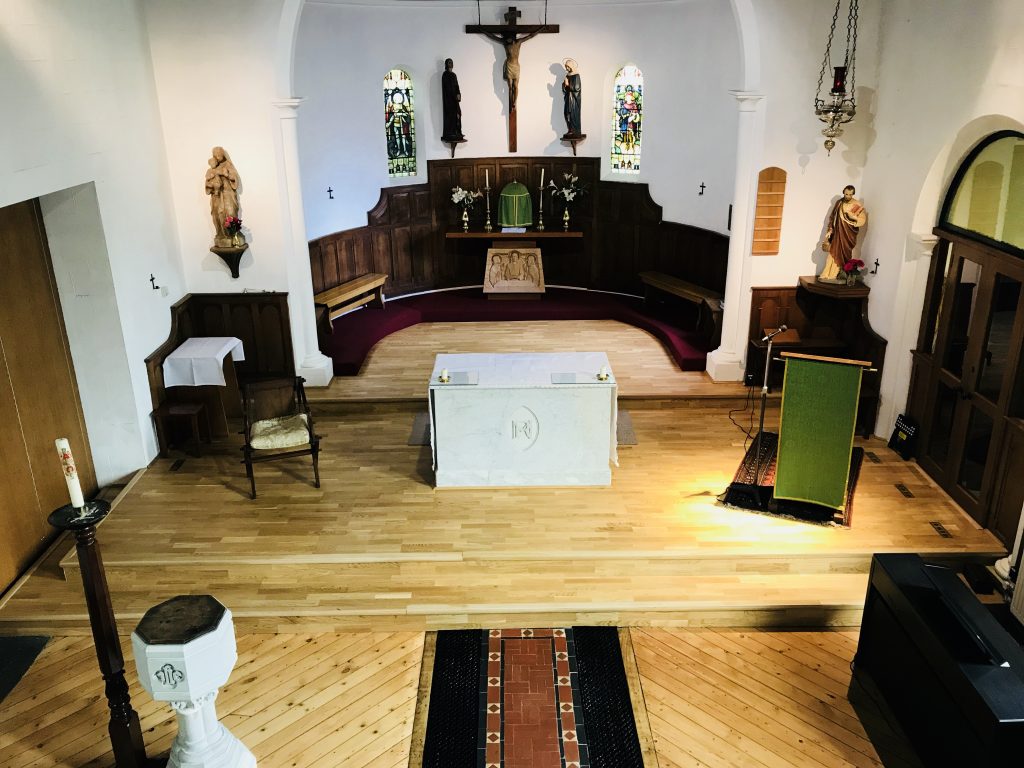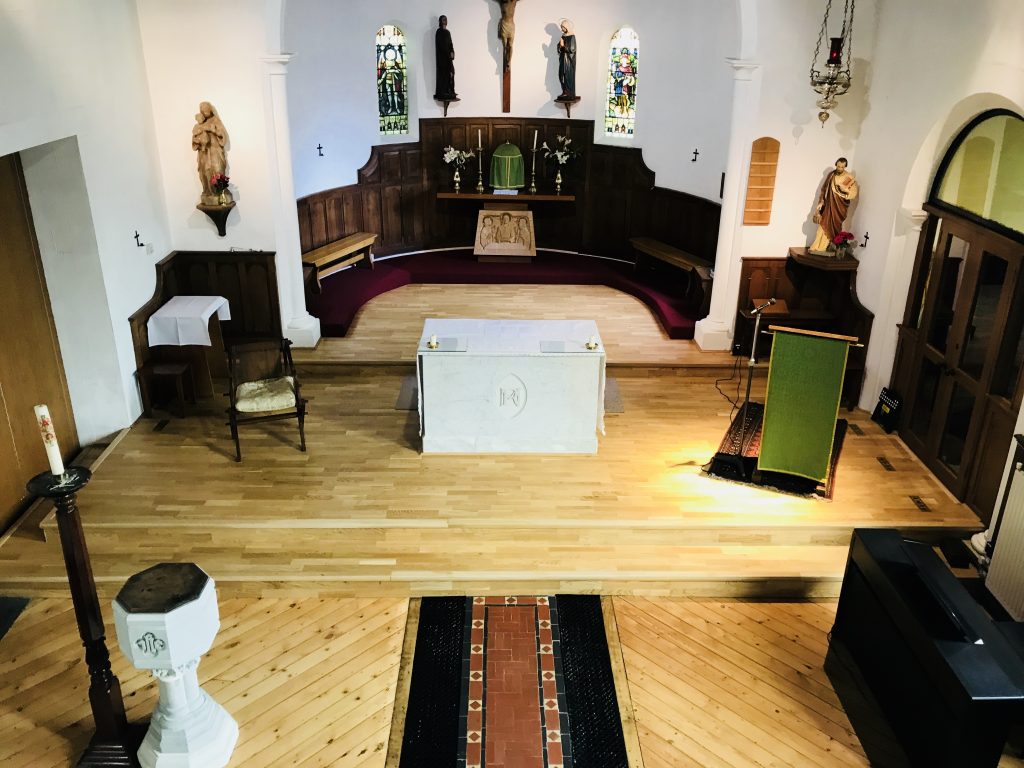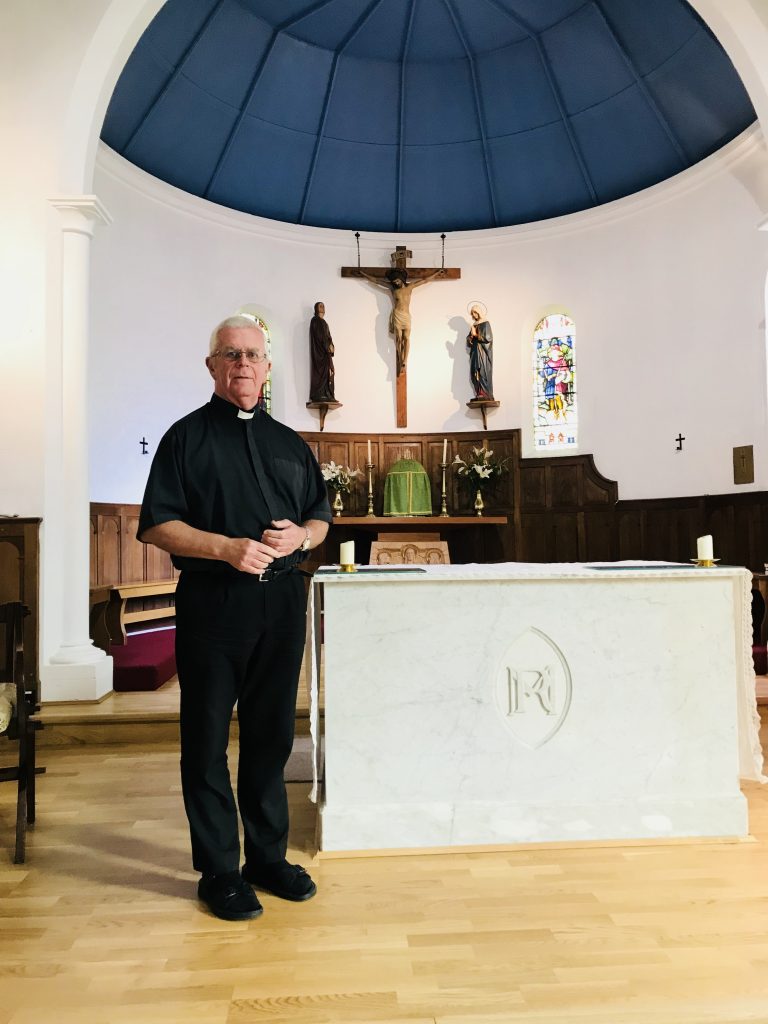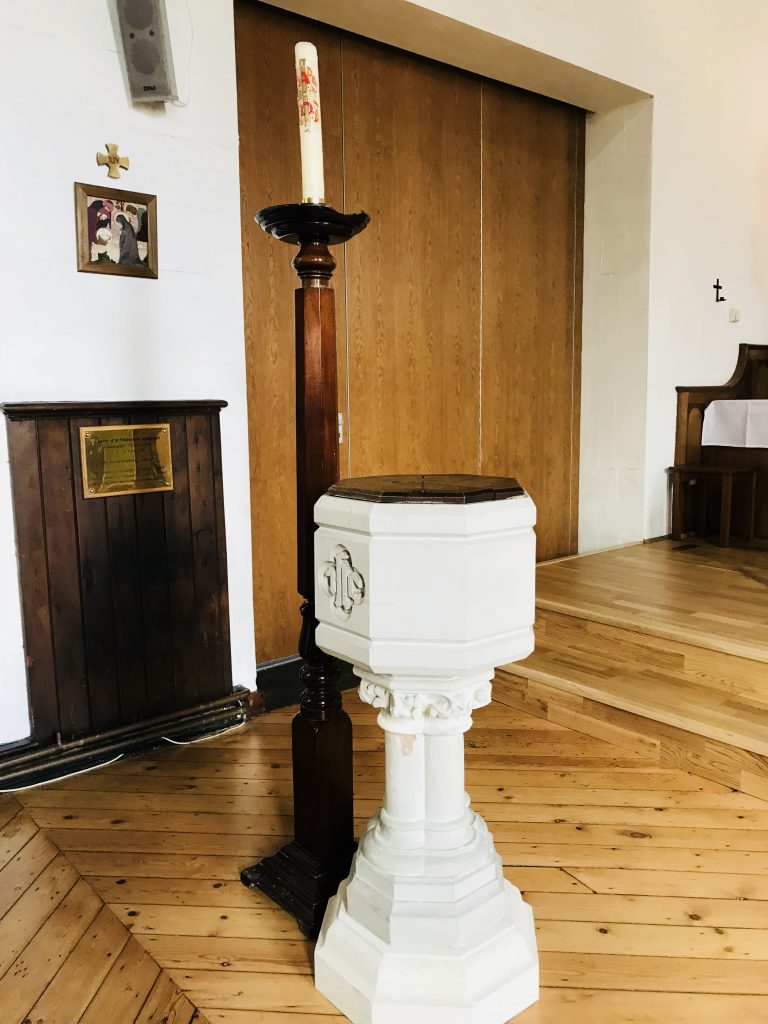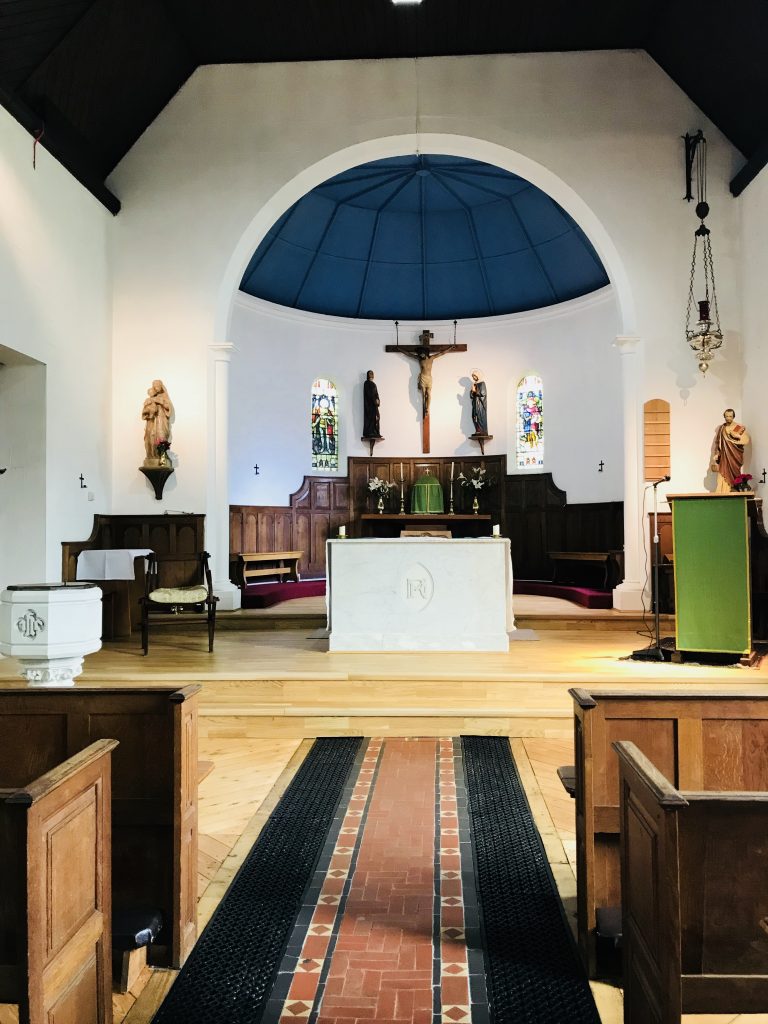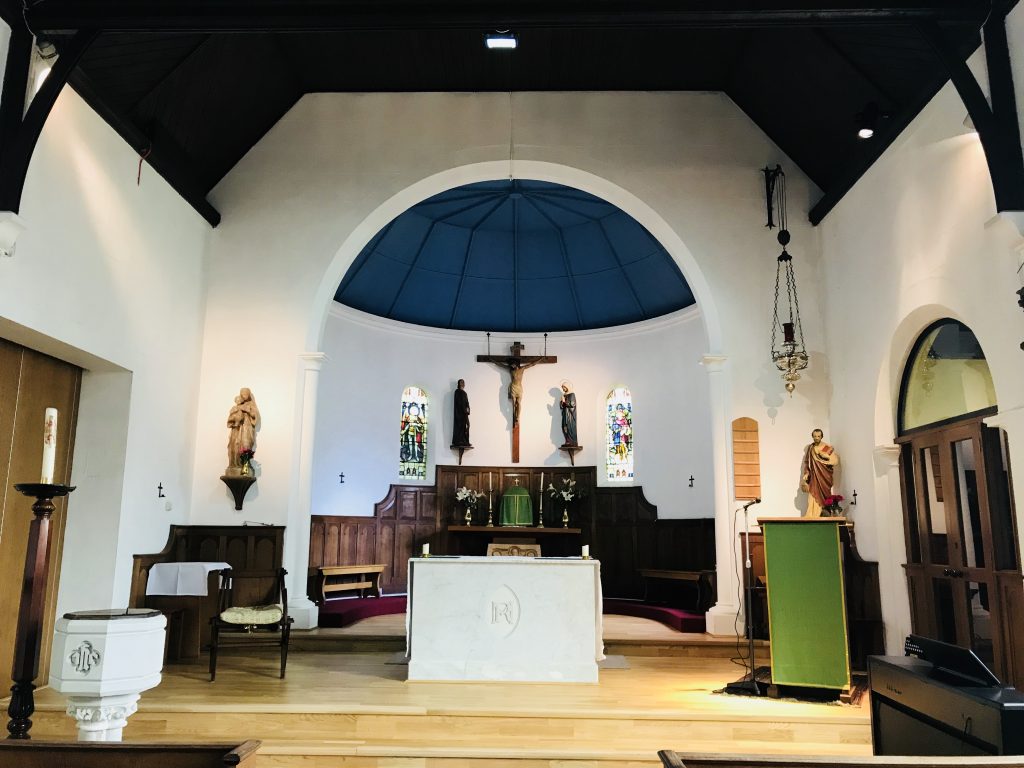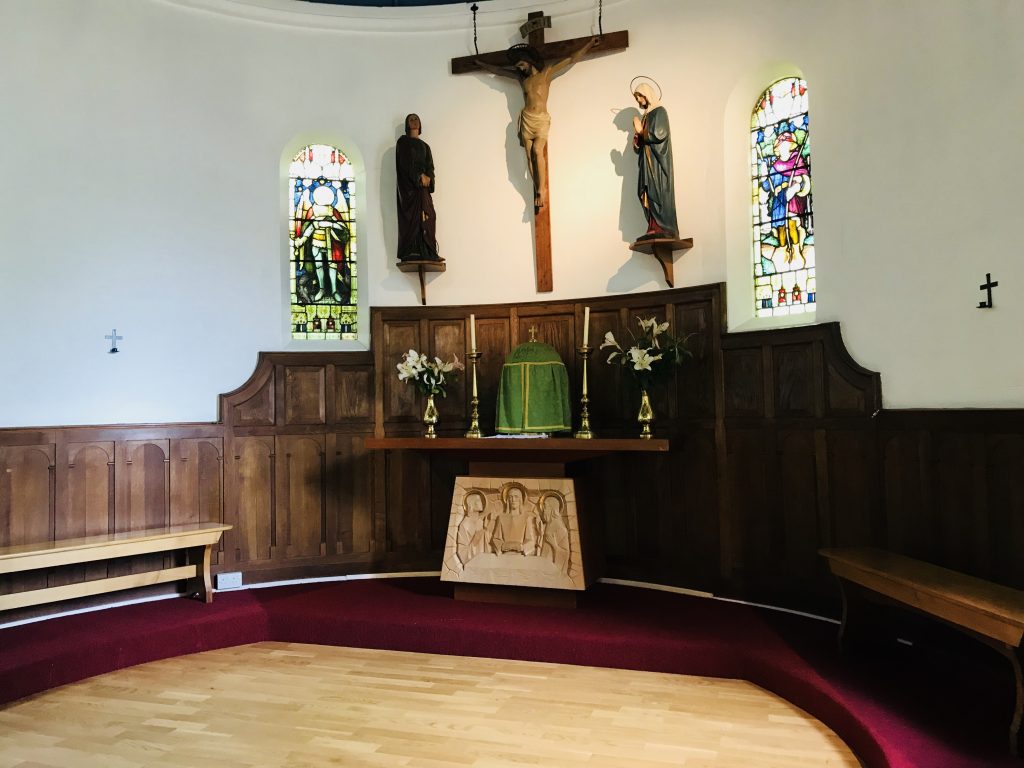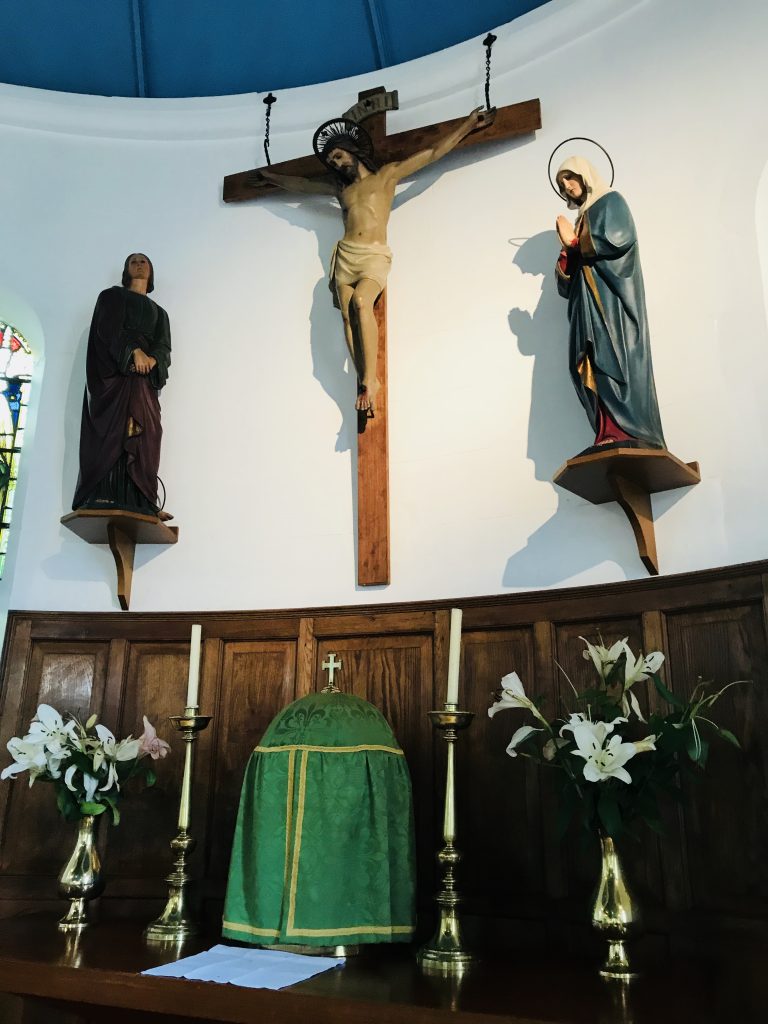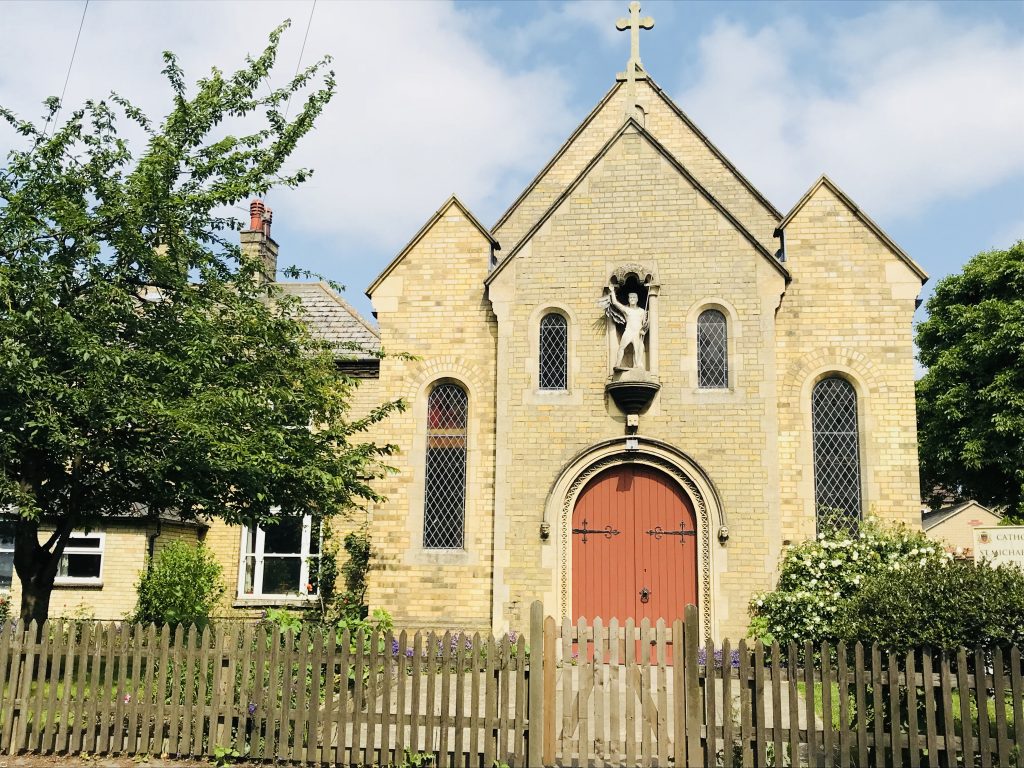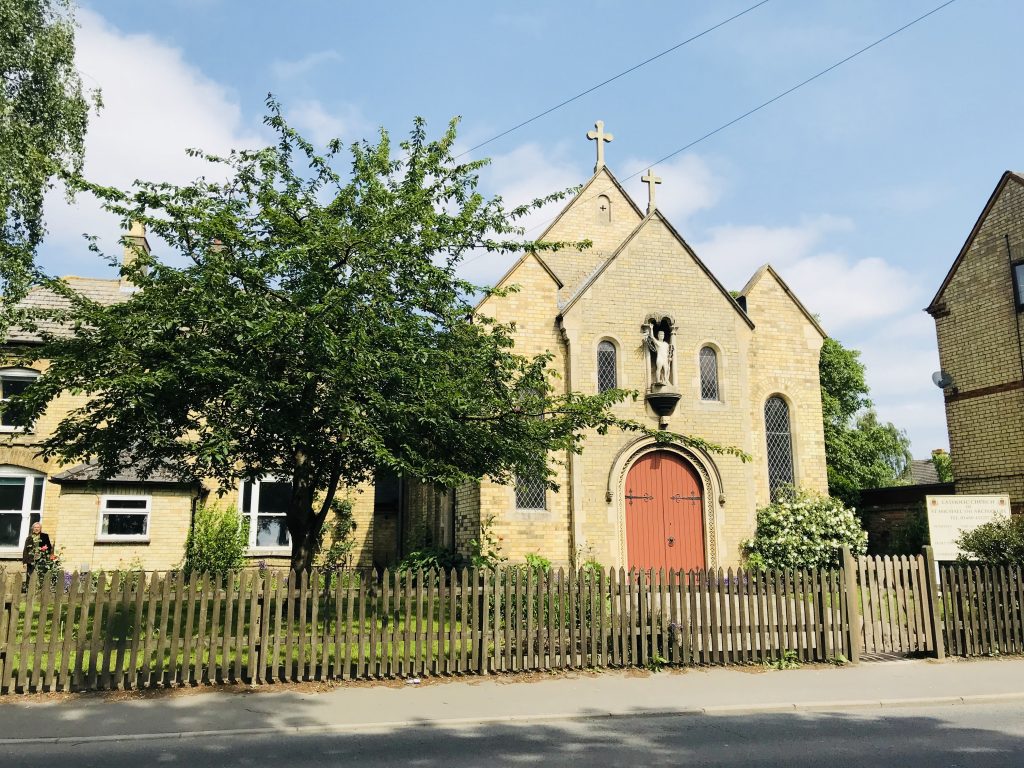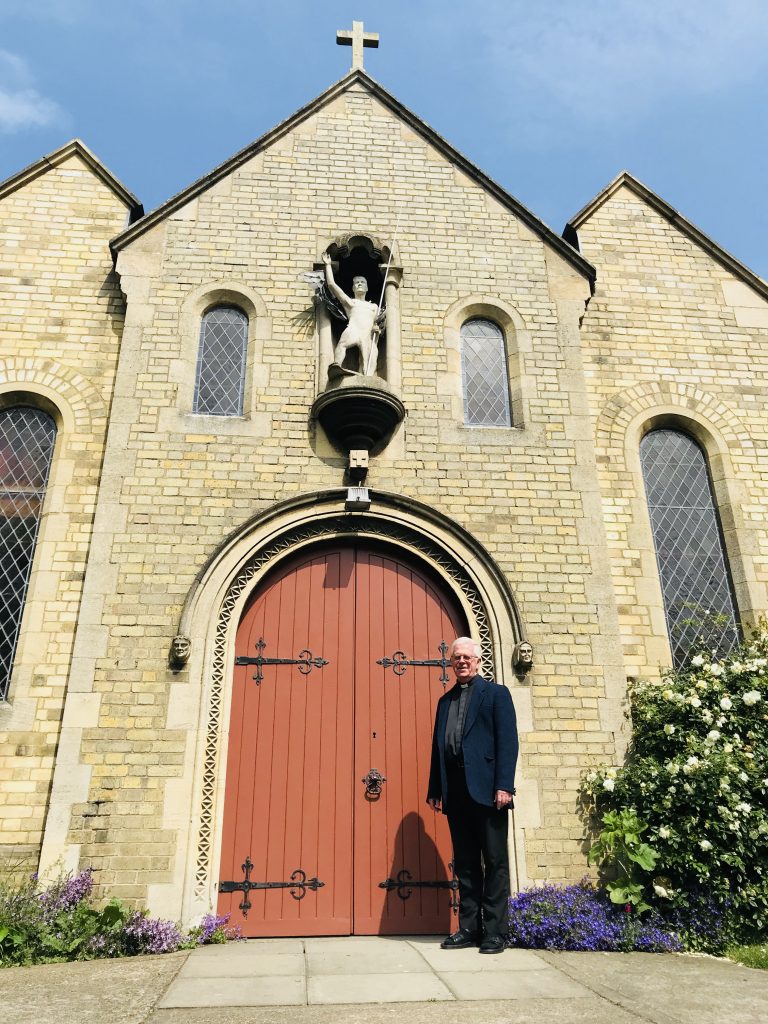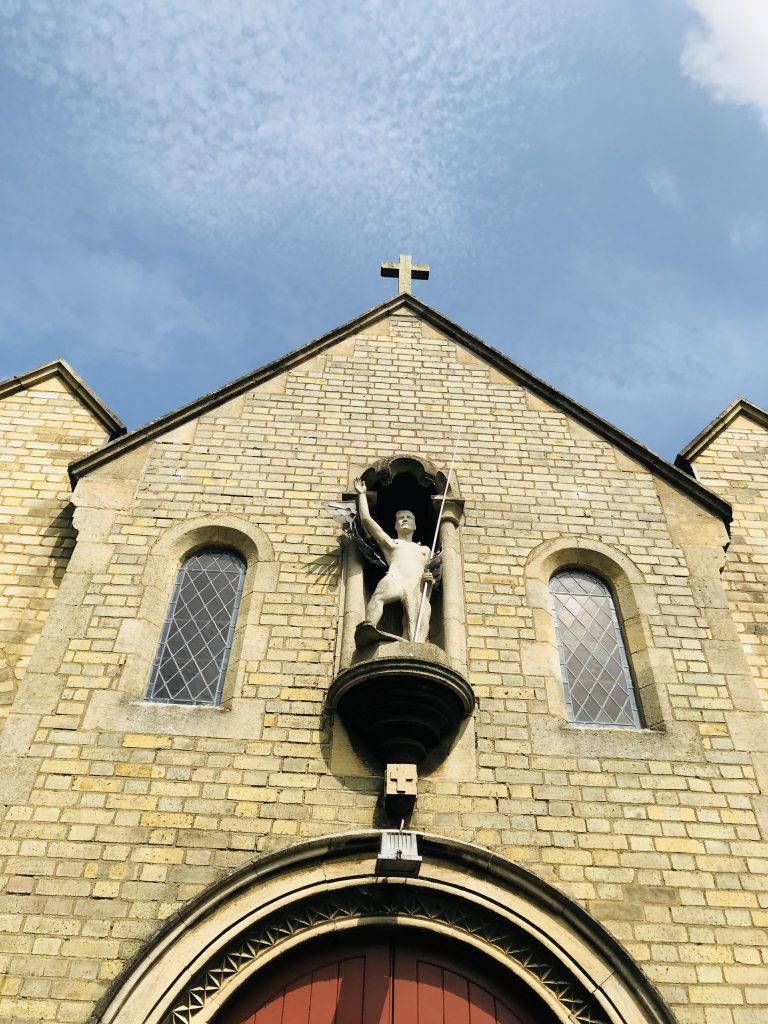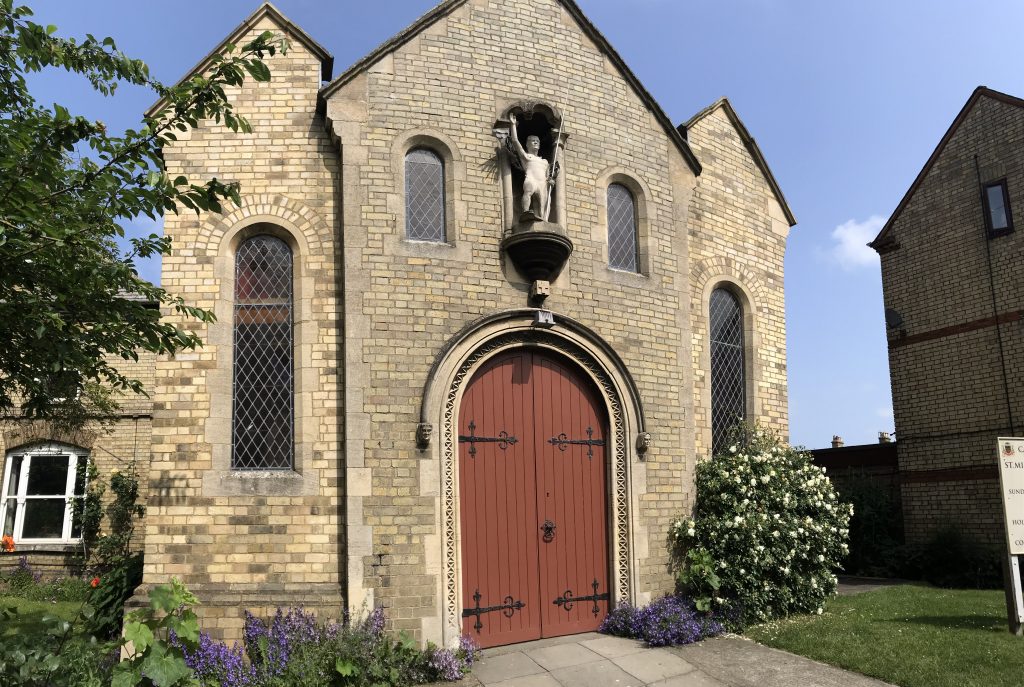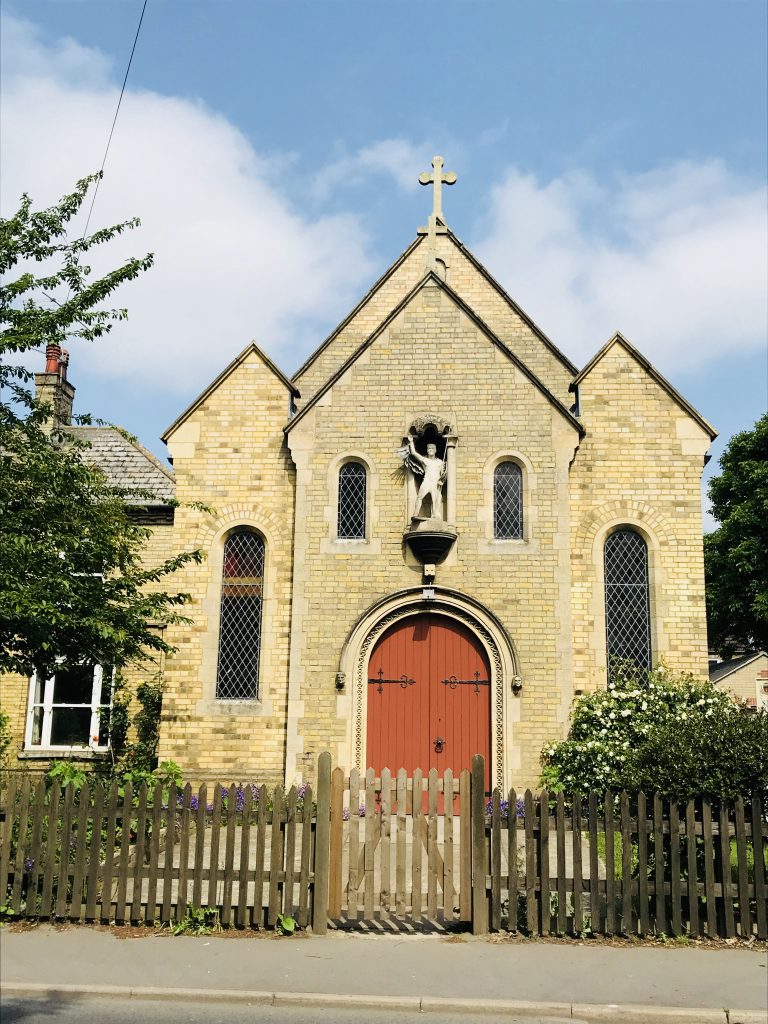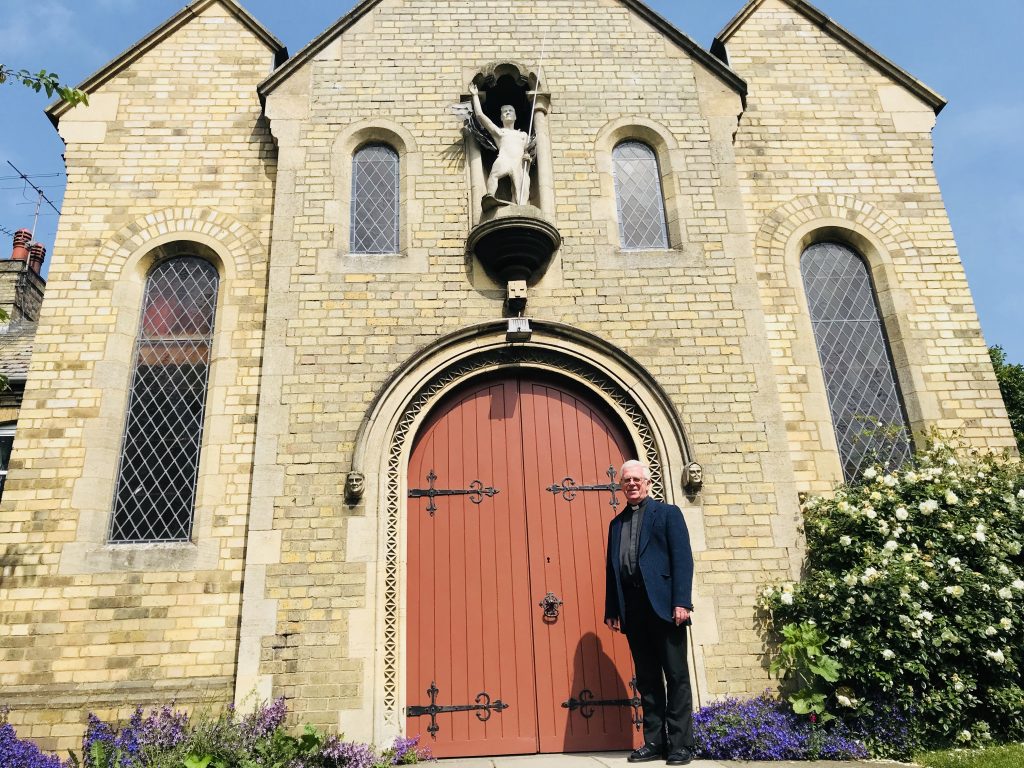CATHOLIC BISHOPS’ CONFERENCE OF ENGLAND AND WALES
Covid-19 Route Map: Step 4 Guidance
Introduction
This Guidance is offered to the Dioceses of England and Wales as the country moves into Step 4 (19th
July) of the Government Covid-19 Response Roadmap published in February 2021. This date has
been delayed by 5 weeks as the Government wanted to ensure that a greater proportion of the public
had received the vaccine before moving to this point.
It is important to reiterate that as Step 4 is reached, the general principles of continuing to create a
safe environment in places of worship and their ancillary buildings are not abandoned. Indeed, the
way forward must be a collective endeavour of all involved in the daily life of the Church in England
and Wales. Recognition of the presence of the virus in the population means that certain preventative
practices will still be required, and this is important to ensure that Diocesan trustees are seen to be
discharging their Health and Safety duties.
The Health and Safety Executive have issued new guidance for employers and for organisations, and
this makes clear that a duty to keep premises safe continues beyond the removal of any covid-19
legislation.1 Indeed, the Government has stated that changes moving forward would be on a riskbased
approach for all organisations with the responsibility to ensure appropriate measures to
safeguard public health sitting with the management of the organisation.
Although any measures adopted locally will not have the “rule of law,” there is a strong emphasis on
common sense and risk averse activities to continue to mitigate against the transmission of the virus
which is still prevalent in society.
General Principles
This guidance has been prepared following discussions with officials from Public Health England
and HM Government Places of Worship Task Force. Key to implementation of this guidance is the
Government’s understanding of moving away from centralised detailed regulation to prudent local
judgements adopting a continuing cautious approach to easements. The key watchwords for the
future steps are discernment of local prevailing conditions and careful consideration of what
mitigations are needed in the light of these.
The following general principles apply:
1. Prevailing Local Conditions
All places of worship should always consider the prevailing local conditions for the virus.
Special consideration should be given to rates at which people are being vaccinated in the
locality, the prevalence of new variants of the virus, the local rates of hospital admissions and
any local public health advice. These data can be obtained from the Director of Public Health
at the local authority (in England) or the Local Health Board (in Wales), or the local
Environmental Health Department , and it is important to have knowledge of these figures.
1 https://www.hse.gov.uk/coronavirus/roadmap-further-guidance.htm
2. Mitigations
It is important to mitigate against the risks of virus transmission. Although the vaccine rollout
programme is very successful to date, over 85% of adults having had one dose and 64% two
doses, the risk of transmission is still live and there are enough people not protected by
vaccination to result in significant hospitalisations. However, HM Government has clearly
stated that the progression from infection to hospitalisation and ultimately to deaths has been
appreciably reduced through the vaccine programme. Most people admitted to hospital
currently are only partially vaccinated or not vaccinated at all and communities should
continue to encourage people to participate in the vaccination programme.
Churches should continue to provide hand sanitiser at entrances and exits and face coverings
are strongly recommended to be worn by those in church. General cleaning to a good
standard, using commonly available cleaning fluids and detergents, with attention to frequent
touchpoints is the standard to continue. This is consistent with the advice from Public Health
England. While the virus can land on surfaces and can infect people if they touch those
surfaces and then touch their mouth, nose or eyes, this risk is significantly lower than the risk
from aerosol or droplet spread which is mitigated against with good ventilation and a face
covering.
There are key actions which churches and parishes have been doing, and should continue to
do, even after 19th July which significantly reduce this risk. These are noted in Appendix 1.
3. Social Distancing and Capacity of Churches
From 19th July, there will be no legislation on social distancing in England but regulations
will continue in Wales for now, and thus churches may increase their capacity, recognising
that for the time being different rules apply for England and Wales.
Care has to be taken to ensure that churches continue to be places where people feel safe to
gather to worship. Each local community should examine the local conditions regarding the
virus, and adopt an attitude of care for the people who desire to attend Mass. Suggestions to
help this include (but are not limited to):
a. In large churches, designating an area of the church where there will be set places,
socially distant from each other, and where those seated there will be required to
wear a face covering.
b. In places which cannot do this, considering whether one Mass over the weekend
schedule would continue providing a reduced capacity with social distancing.
c. Producing simple cards with a phrase such as “Please leave a Space” which people
can pick up on entry to church and put beside them so that a space can be left to
allow for distancing.
The adoption of methods such as these will build confidence in the people that the church
remains a safe place to enter and worship.
Each church should continue to assess the local situation regarding the virus and adapt as
necessary to the local conditions. This may mean that in areas of very high transmission,
churches may have tighter measures than in areas of lower transmission.
4. Congregational Singing
Indoor congregational singing will be permitted from 19th July. The use of cantor groups and
other choirs is now permitted. It is recommended that singing should be phased in gently as
part of worship over the summer period and that face coverings should be worn by members
of the congregation whilst singing together, until infection levels reduce.
Acts of Worship
As the restrictions are lifted public acts of worship can return to normal practice, with some
exceptions for the time being. All of the above mitigations in creating safe spaces should be
considered by the local communities as means of promoting public confidence in the covid security
of churches. In addition the following are recommended as good practice.
1. Opening of Churches
Churches can be left open and unsupervised for individual prayer during times when
there are no public acts of worship. QR codes (or other means of attendee
identification) should be clearly signposted at entrances and those entering encouraged
to use them for test, track and trace purposes. Hand sanitiser should still be made
prominently available for people to use.
2. Test, Track and Trace
As long as the NHS Test, Track and Trace system is in operation, churches should
continue to make available the means for people to sign in for acts of worship using
the NHS app and the associated QR codes (or other means of attendee identification).
If an online Mass Booking system is in place, this too could be adapted to the new
capacities of the churches and continue to be used so that attendees are known.
3. One-way systems and movement of people
It is no longer necessary to have one-way systems or other restrictions on movement
in churches from this time onward. People should exercise good responsible behaviour
especially when moving to receive Holy Communion during Mass and should avoid
getting too close to each other.
4. Stewards
The deployment of stewards will no longer be necessary to show people to designated
seats etc (except when a community has decided to employ social distancing as part of
a scheduled Mass). However, a welcoming presence at the church door is a valuable
sign of hospitality, and stewards can assist in the cleaning of frequently used touch
points within the church building.
5. Anointings as part of the Liturgy
Moving forward, liturgies of the Church which involve anointing can be addressed in
two ways. If there is a single subject (like a single child baptism or the anointing of a
sick person) the thumb can be used providing it is cleaned and sanitised before and
after each application (for example using an antiviral wipe). If there are multiple
subjects (as in a confirmation) then a cotton bud for each candidate should be used.
Again, local judgement has to be applied in each situation.
A. Celebration of Holy Mass
The following is recommended for the celebration of Holy Mass from the 19th July within the
churches and communities in England and Wales:
• At this time, it is not recommended that Holy Water stoups are refilled. Should people
wish to receive holy water, it is recommended that a container with a tap is provided
so that small bottles can be filled which can then be taken home.
• All usual ministers for the celebration of Holy Mass can be deployed such as servers,
cantors, readers and Extraordinary Ministers of Holy Communion.
• The offertory collection can be resumed in church with baskets and pouches, however,
it is encouraged to promote online or contactless giving in the churches if possible
• It is recommended that the physical Sign of Peace remain suspended as it is not an
integral part of the Mass, and its omission will help to reduce physical contact between
people during the celebration.
• Holy Communion will continue to be under one kind and the ministers will continue
to sanitise their hands beforehand and wear a face covering whilst distributing.
Communion is recommended to be distributed in the hand but those who wish to
receive on the tongue may do so. There should be care on the part of the minister to
avoid physical contact with the hand or the tongue of the communicant when
distributing Holy Communion. In the event of contamination the minister should
sanitise their hands before further distribution.
• Concelebration is permitted and Holy Communion by the concelebrants should be by
intinction (including the principal celebrant), and the consumption of the remaining
sacred species and cleansing of the chalice should be performed by the principal
celebrant alone.
B. Celebration of Holy Baptism
Baptisms now have no restrictions on numbers attending however it is recommended that single
families should have children baptised at any one celebration. Baptisms involving multiple families
and children should be avoided for now.
C. Celebration of Confirmation
Confirmations can be celebrated as usual with the caveat that the laying on of hands should be by the
celebrant extending the hands over the confirmandi and the Sign of Peace be a gesture without any
physical contact.
D. Celebration of the Sacrament of the Sick
If this takes place in a hospital or care home, then the minister should take advice regarding the level
of PPE required from the institution. The laying on of hands should be by extension over the sick
person and the anointing can be done as indicated in (5) above. The Sign of Peace should be a gesture
without touch.
It is also important to note that Government regulations have now been introduced requiring people
who regularly visit care homes to be vaccinated in England. This will include sick visitors from
parishes and clergy. The legislation is likely to come into force in October 2021. A separate note
will be produced on this in due course.2
E. Celebration of Ordination
The Bishop and those who lay hands on the one to be ordained should sanitise their hands before and
after the action. The anointing should be done as per (5) above by the bishop. Care should be
observed to minimise the number of people handling the symbols of ministry which are given and
received as part of the rite. The Sign of Peace should be a gesture without touching.
2 The Government has made a statement regarding this development at :
https://www.gov.uk/government/news/everyone-working-in-care-homes-to-be-fully-vaccinated-under-new-law-toprotect-
residents
F. Celebration of Marriage
There is no restriction on the number of people that can attend marriages in the Church. Marriages
in the form of a Nuptial Mass should observe the recommendations for the Celebration of Holy Mass.
Those within a Marriage Service outside of Mass should apply the usual norms.
G. Celebration of the Sacrament of Reconciliation
A physical barrier, such as a Perspex sheet or heavy curtain, should cover the grille between the
confessor and the penitent. Good ventilation of the penitent’s side of the confessional should be
deployed to prevent stagnation of air.
Confessional boxes should be cleaned after the period of confessions has ended, and the doors left
open to facilitate good ventilation.
H. Celebration of Funerals
There is no restriction on the number of people that can attend funerals in the Church however, good
collaboration with Funeral Directors over the local conditions and regulations regarding the place of
committal should continue. Funerals in the form of a Requiem Mass should observe the
recommendations for the Celebration of Holy Mass. Other funeral services should follow the ritual
as published.
Home Visits
Home visits can now take place by priests, deacons and Extraordinary Ministers of Holy Communion
and other volunteers. The minister to the sick or housebound person must take care to ensure that a
minimum number of visits takes place to different homes in a single session of visiting. There are
three important steps to avoid possible spread of the virus, especially if someone is infected but
asymptomatic:
o It is recommended (outside hospital and hospice chaplaincies who have infection control
in place) that only one morning and one afternoon visit is made in a day to minimise risk
of infection.
o The use of regular freely available covid-19 home test kits is recommended for those doing
pastoral visits, to ensure they are not potential vectors of infection to those who are sick
and medically vulnerable. These can be obtained through
www.gov.uk/find-covid-19-lateral-flow-test-site
o Careful hand sanitisation and minimising of exposure times indoors are important
considerations as well.
Social Activities
Parish social activities can be resumed from 19th July. It is strongly recommended that a risk
assessment for both the activity and the space is completed for the gathering. Government guidance
for the use of multi-purpose facilities is referenced (NB this has not been updated since 17 May).3
Catechetical Groups/Formation Groups/Prayer Groups
It is recommended that a blended mode of catechesis takes place moving forward, with a combination
of both in-person meetings for those involved as well as online sessions. The requirements for covid
security should be determined locally, following any Government guidance that becomes available.
3 https://www.gov.uk/government/publications/covid-19-guidance-for-the-safe-use-of-multi-purpose-communityfacilities/
covid-19-guidance-for-the-safe-use-of-multi-purpose-community-facilities
Non-Church Buildings
CIS Ltd has provided a set of guidance for the safe use of parish halls and other ancillary spaces for
church premises which sets out the obligations on both Church authorities and groups and hirers.
This is appended to this document.
Rev. Canon Christopher Thomas
FINAL
15th July 2021

